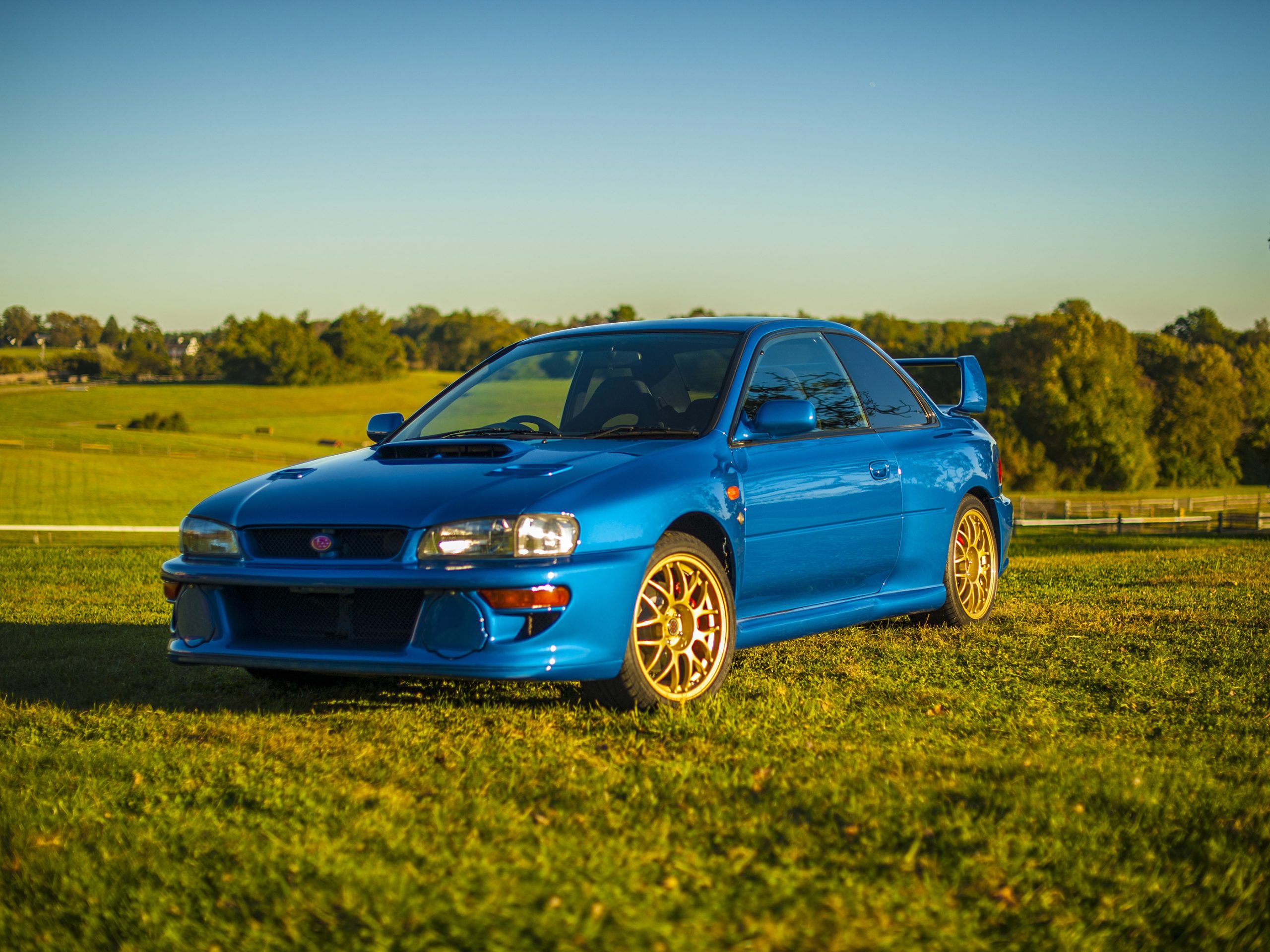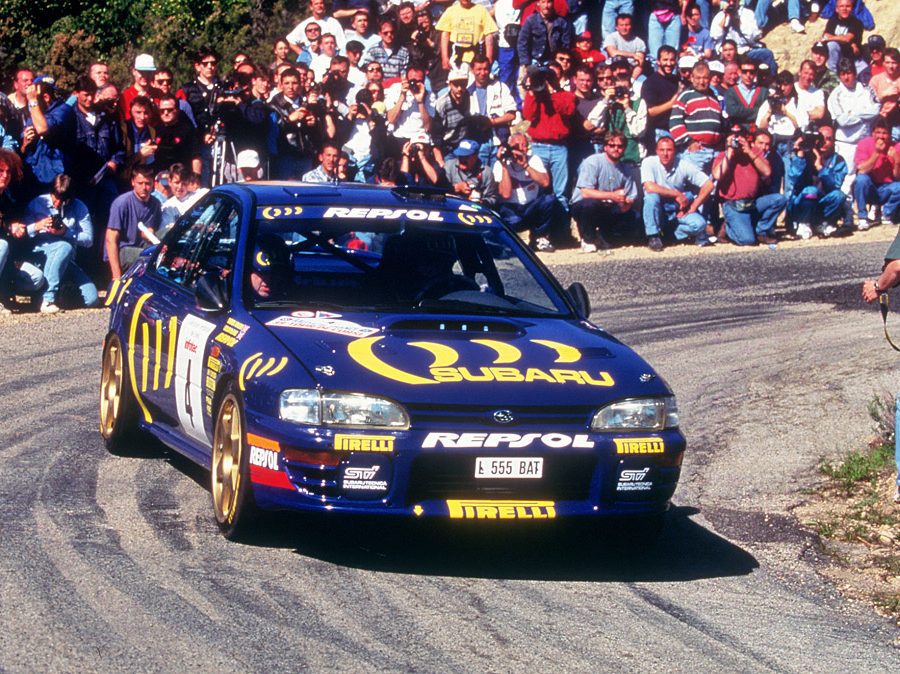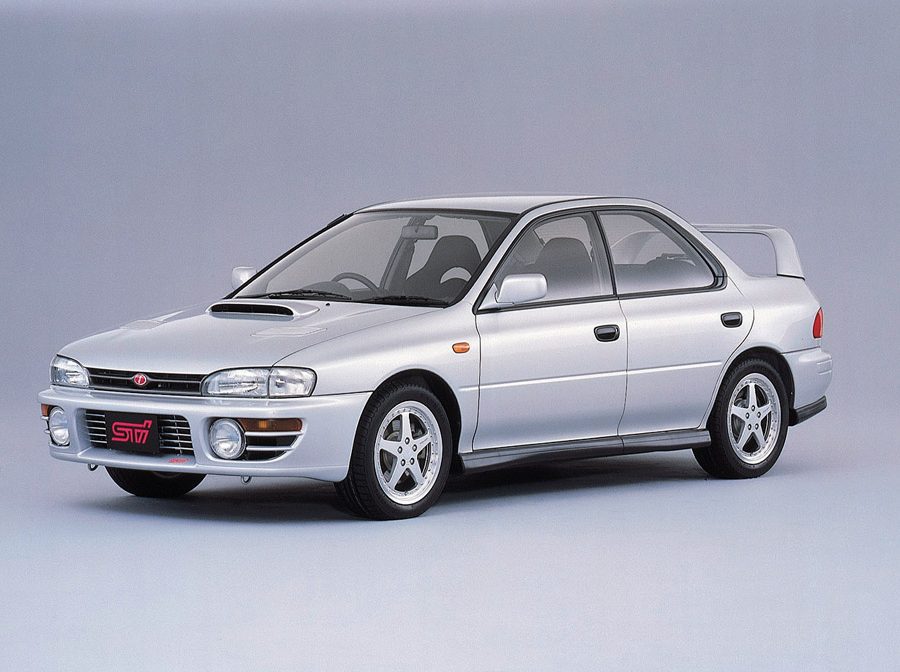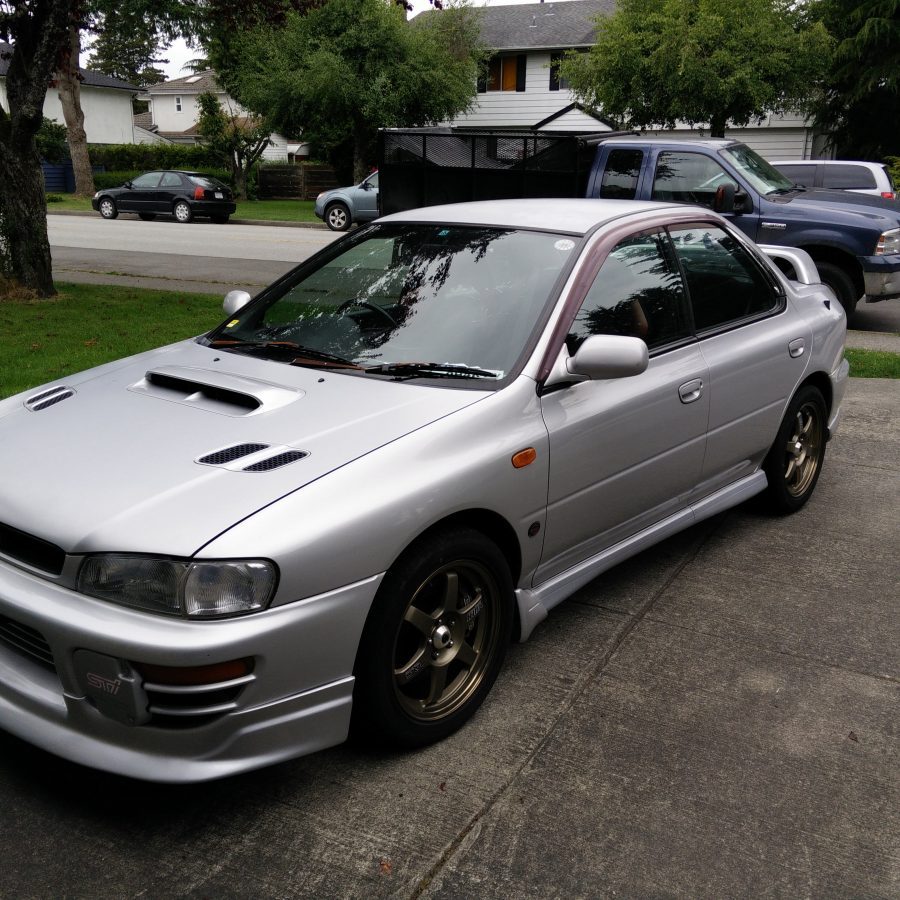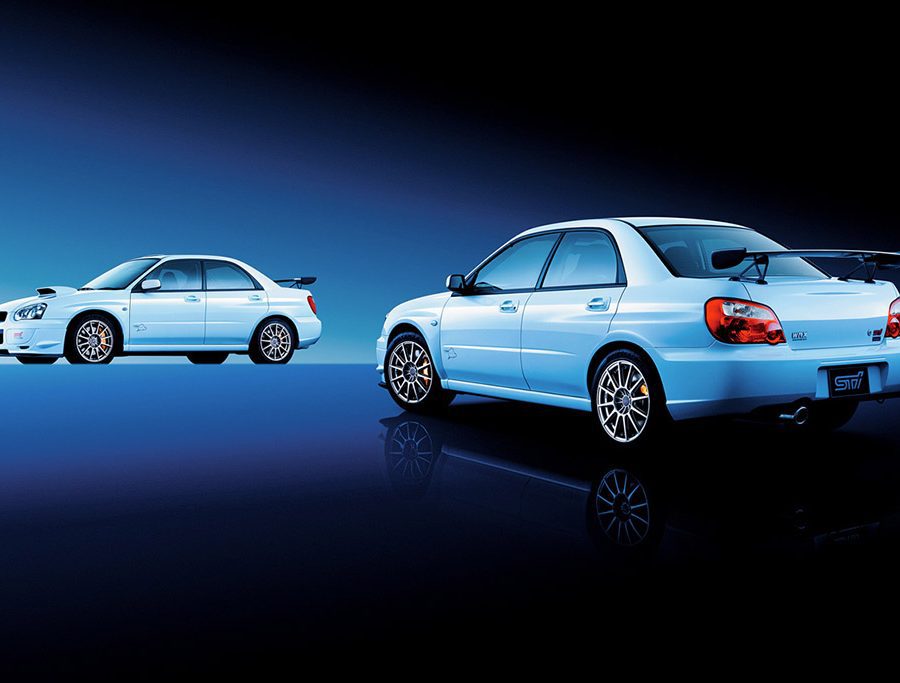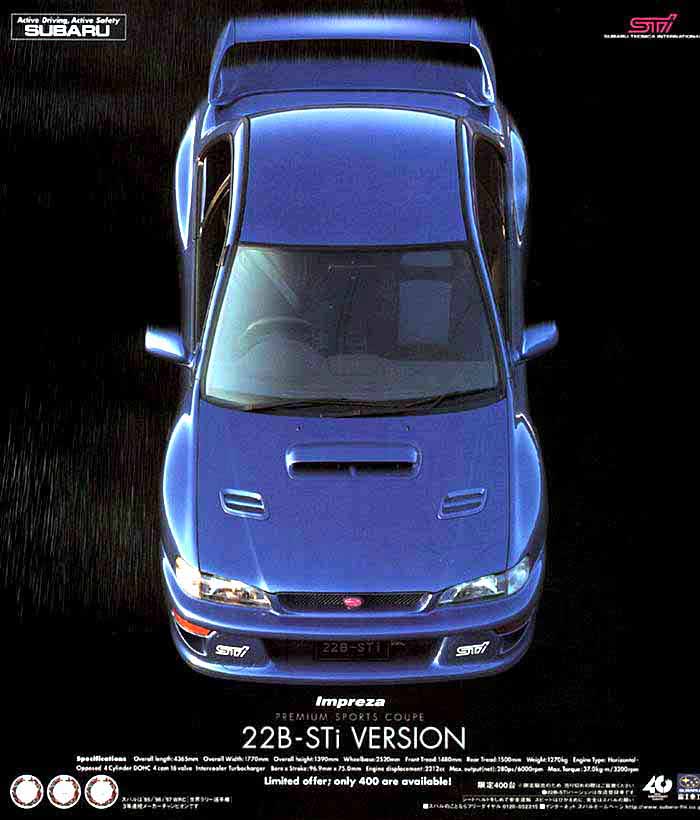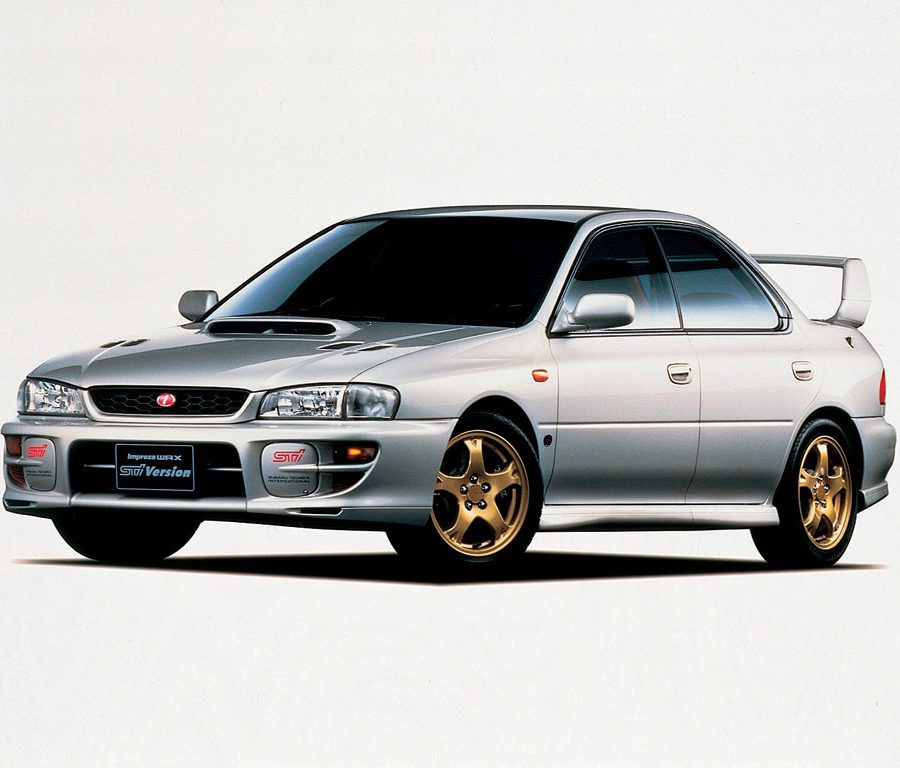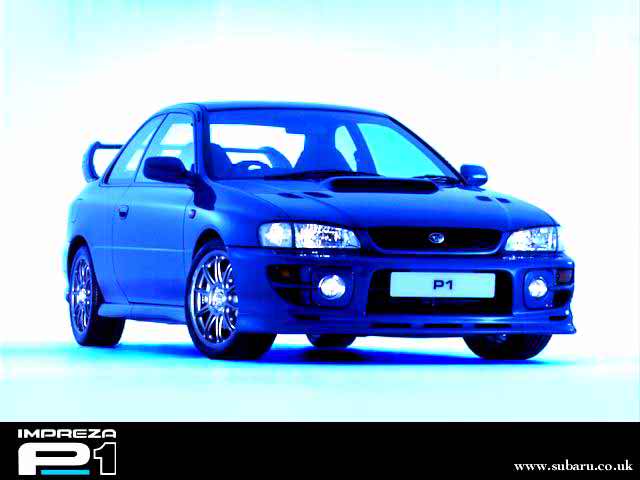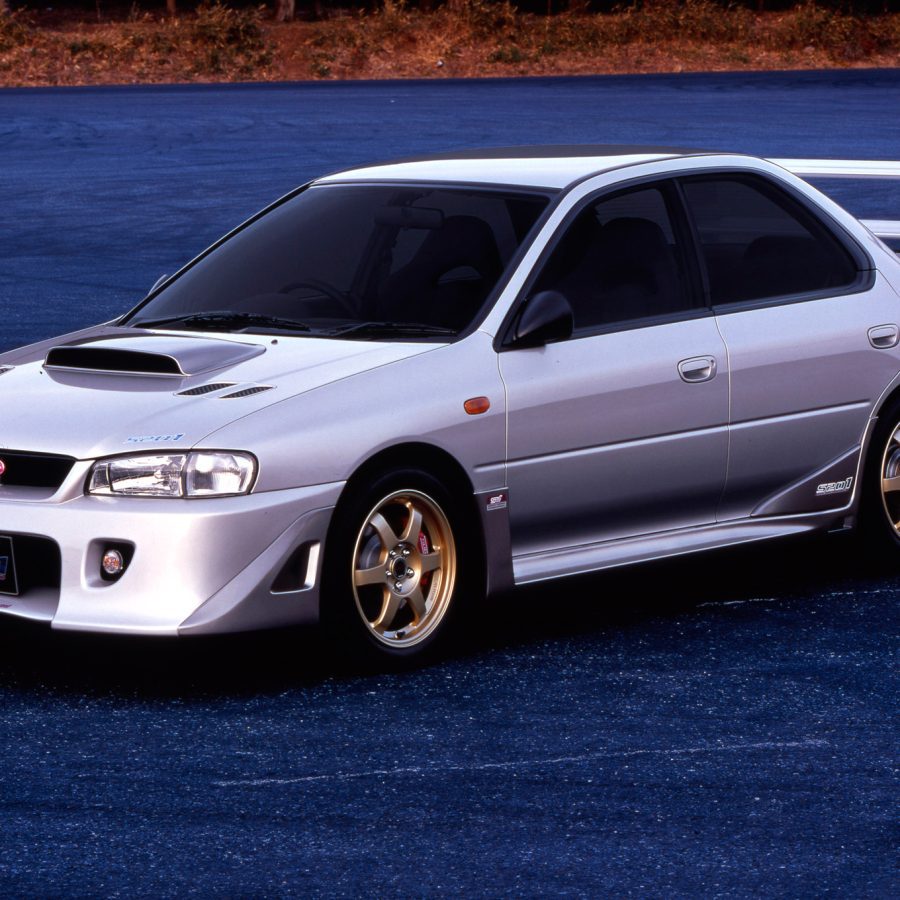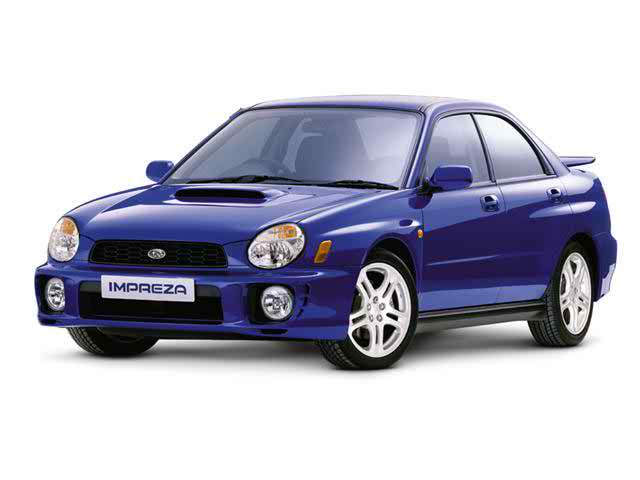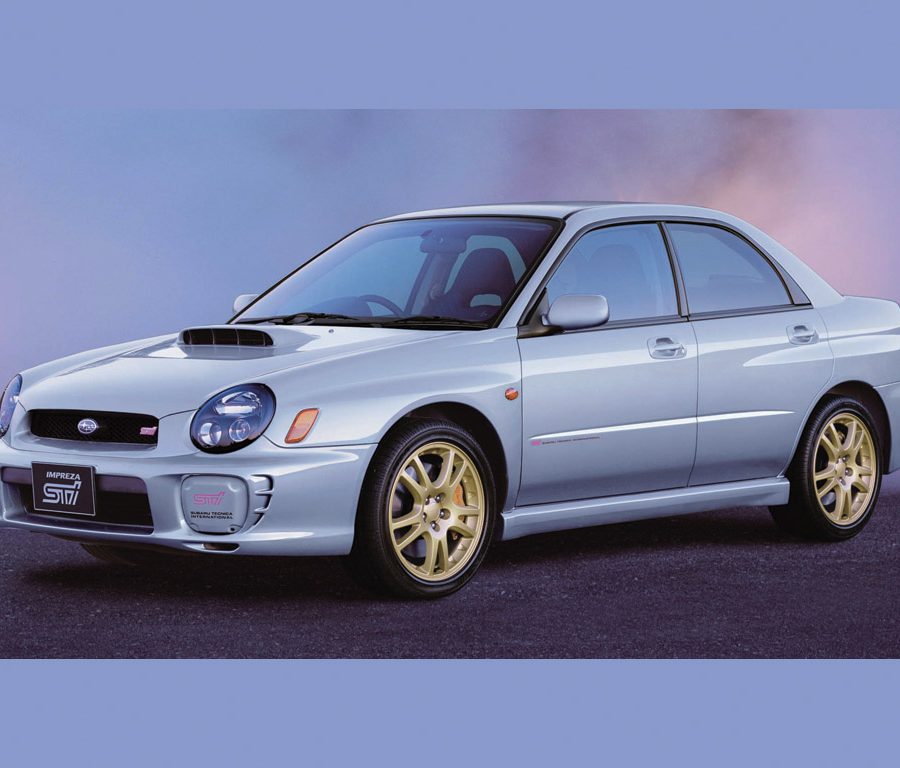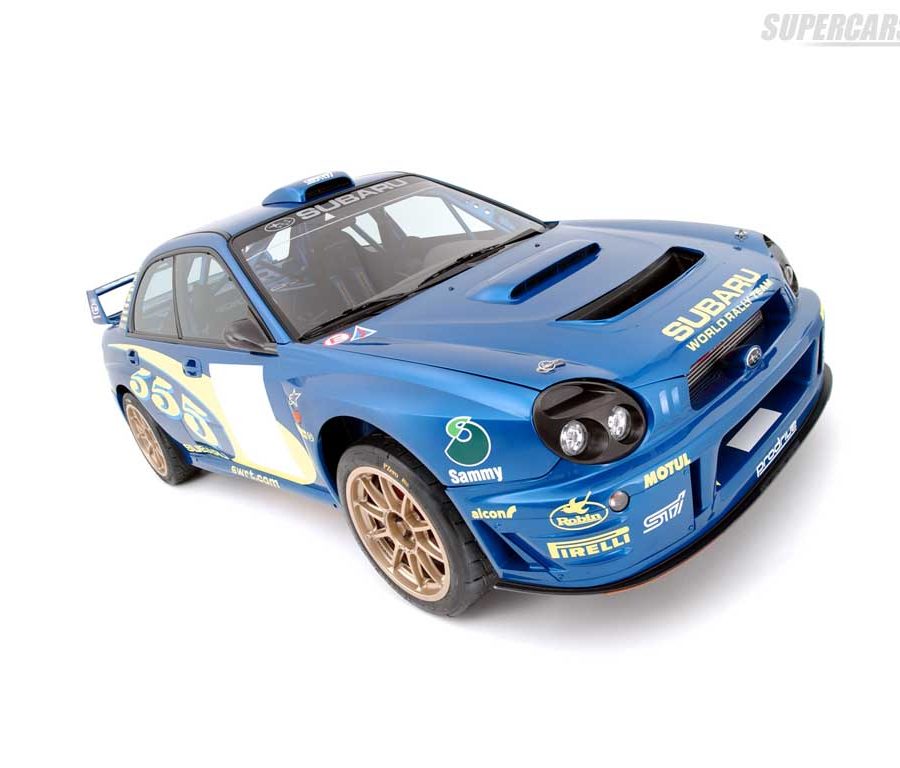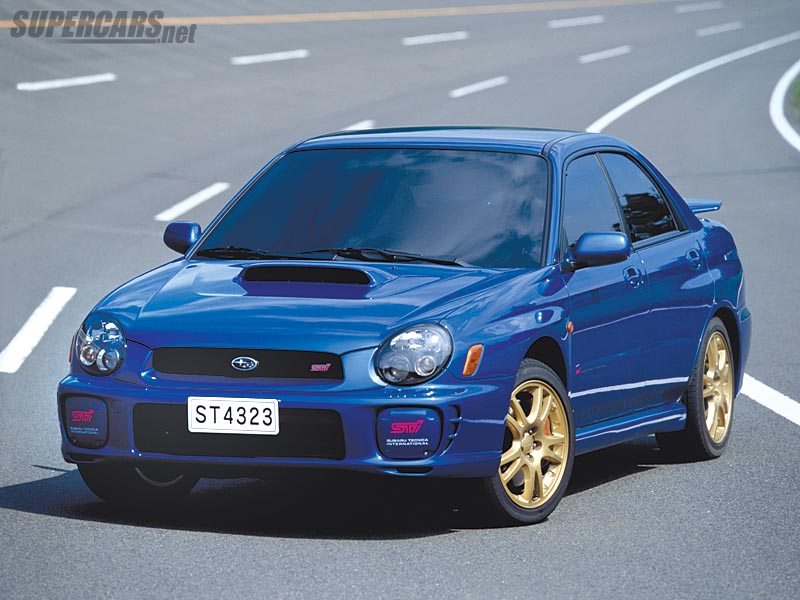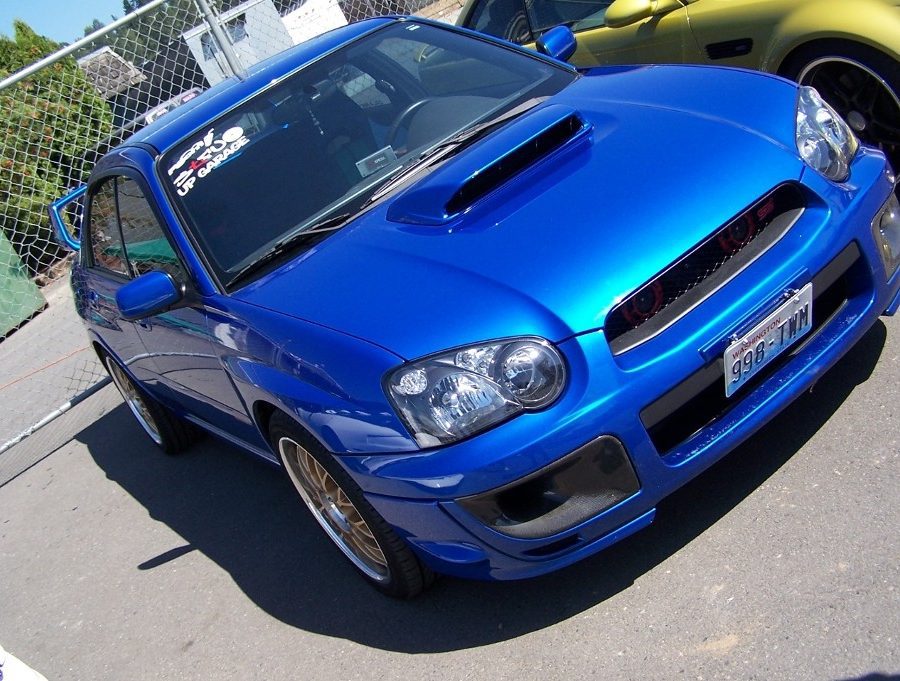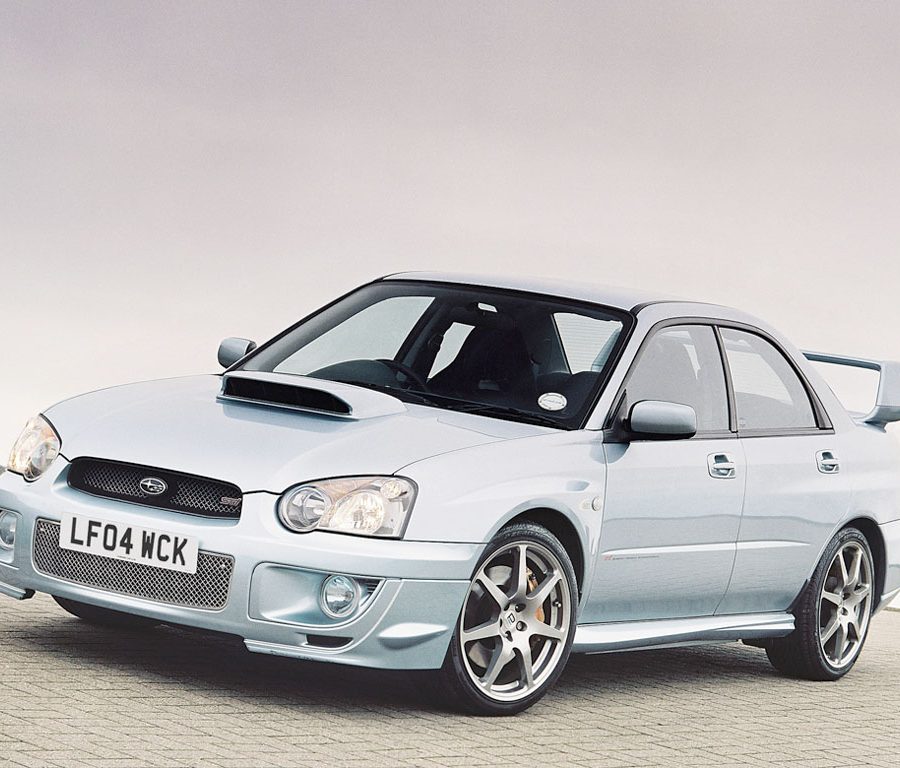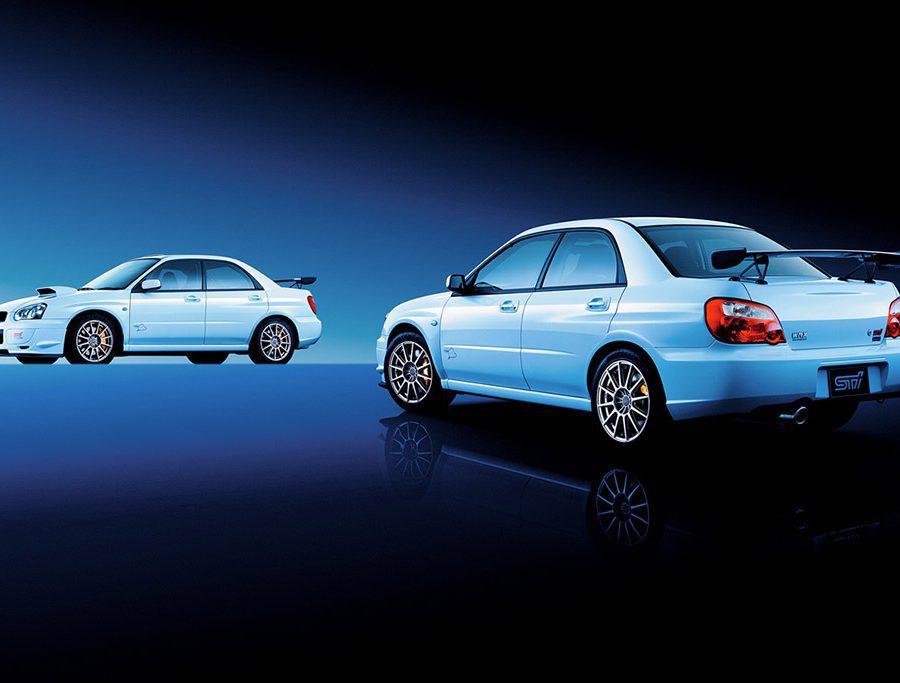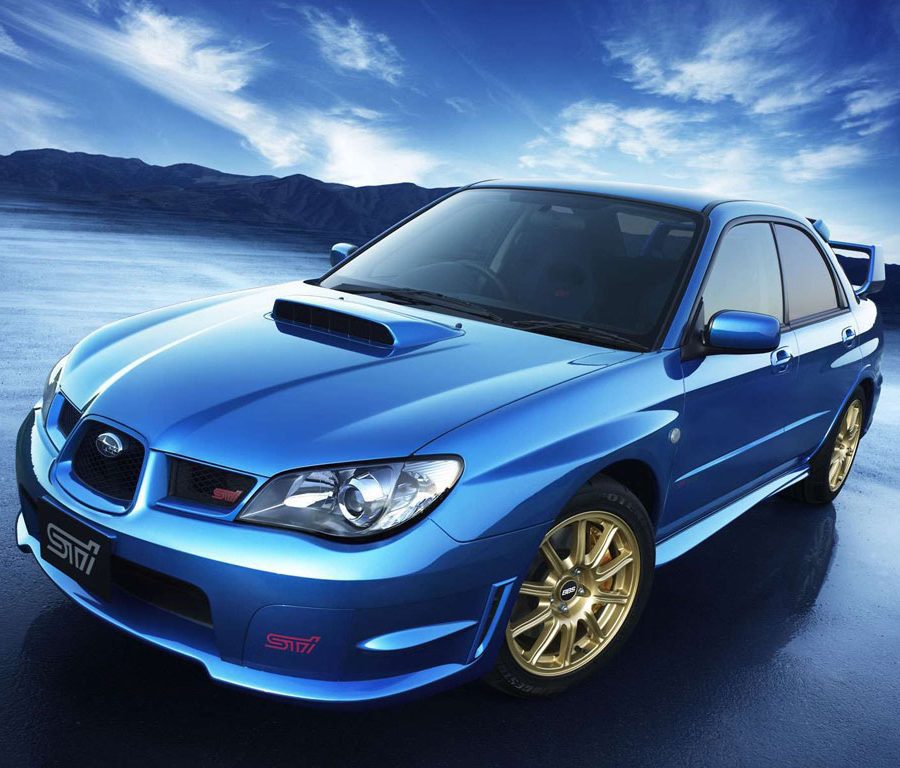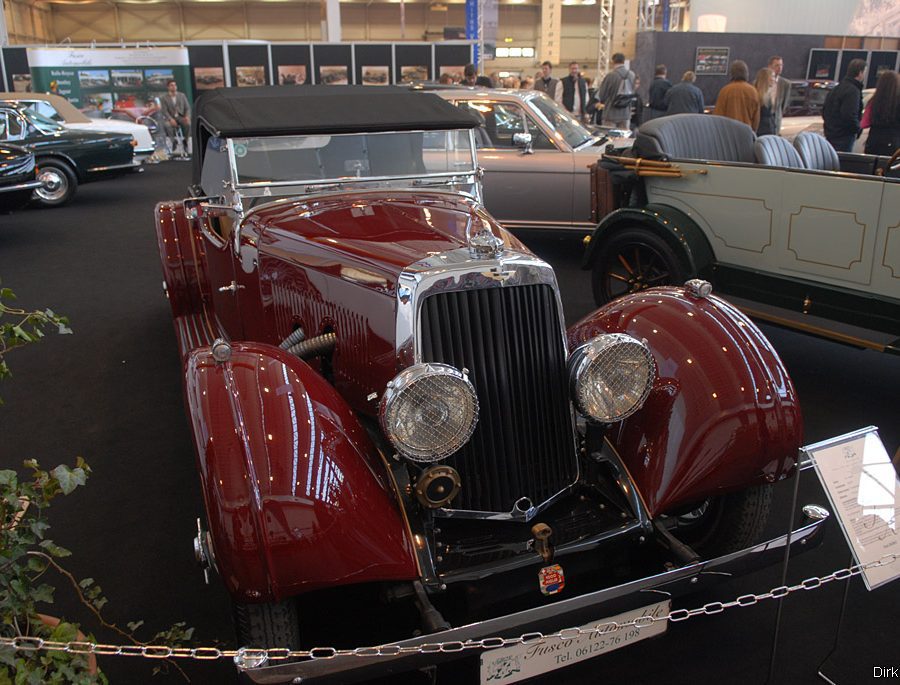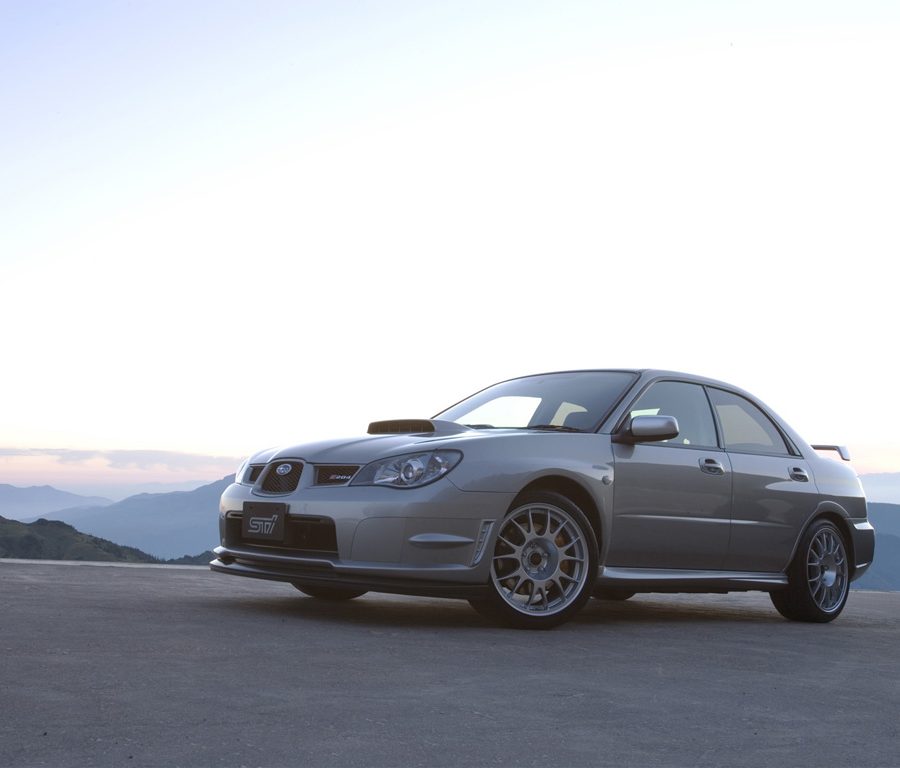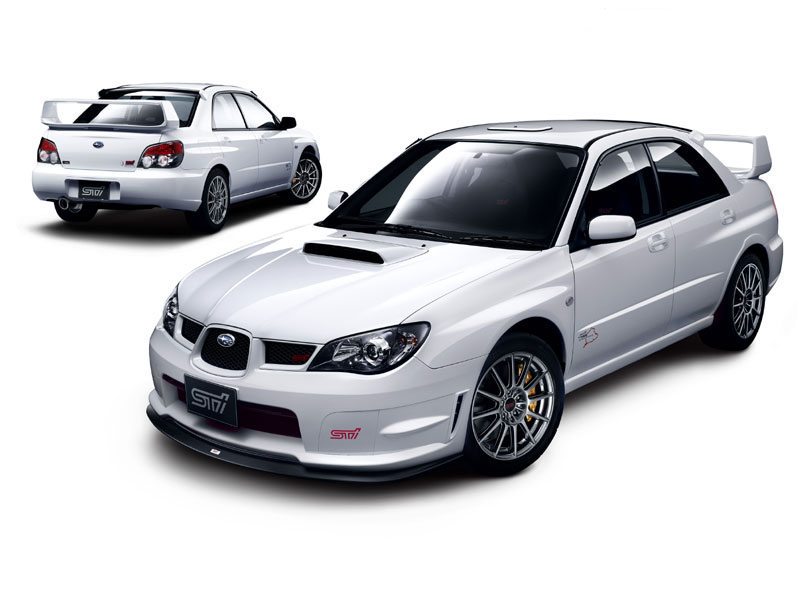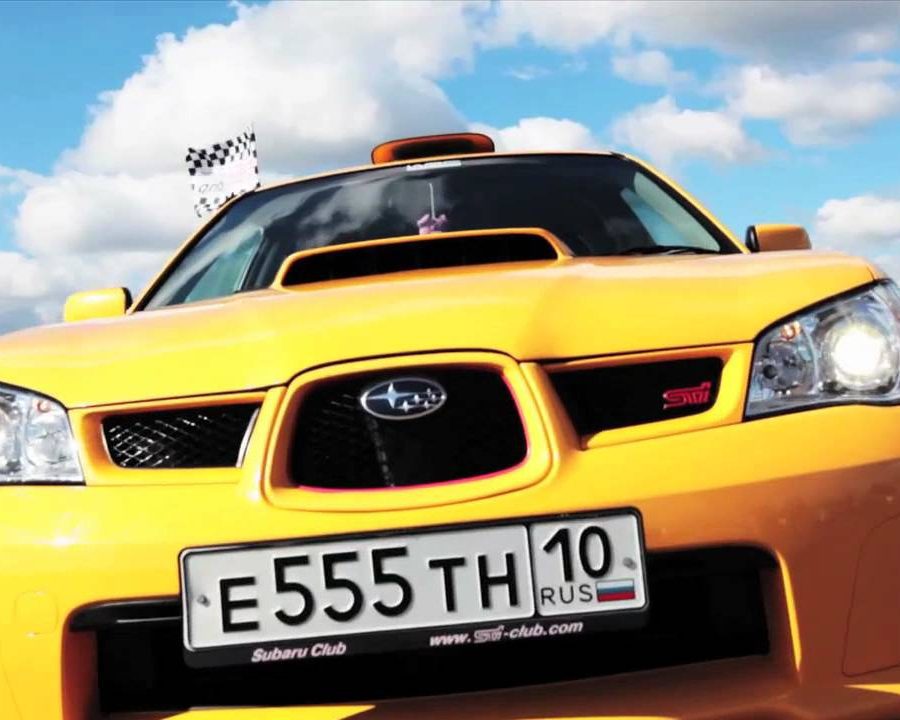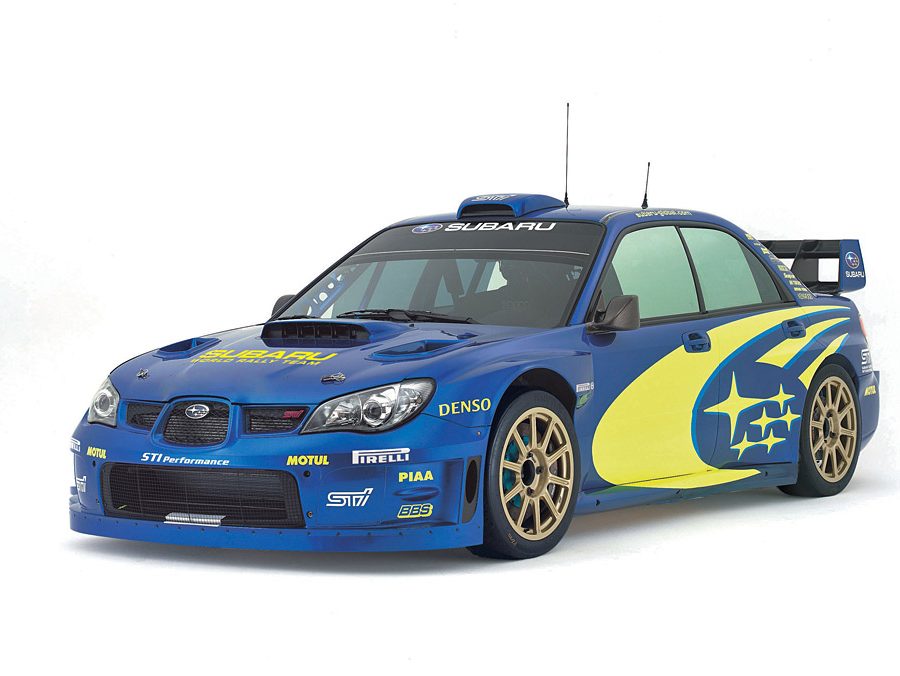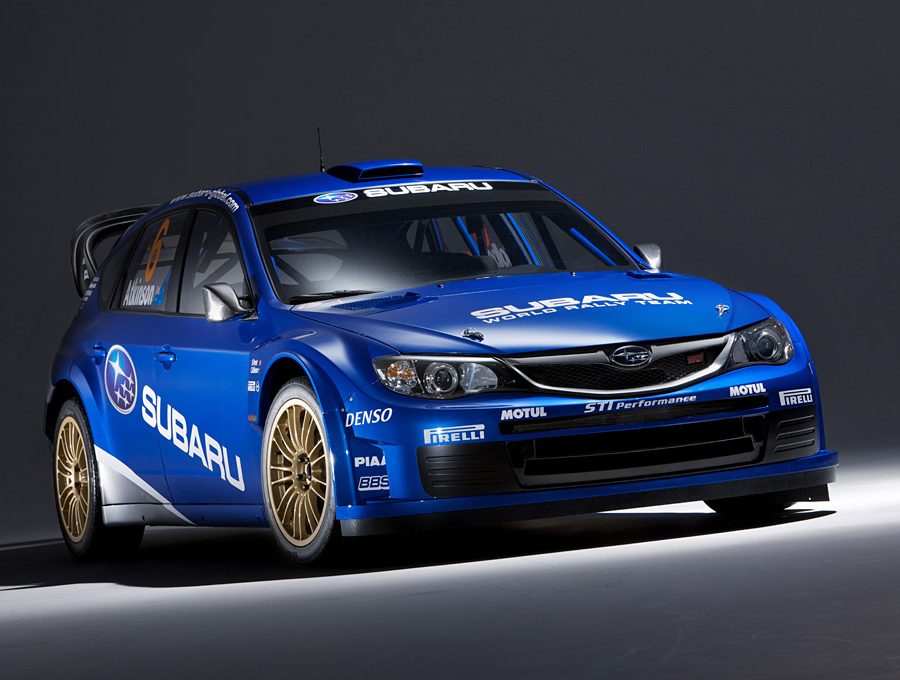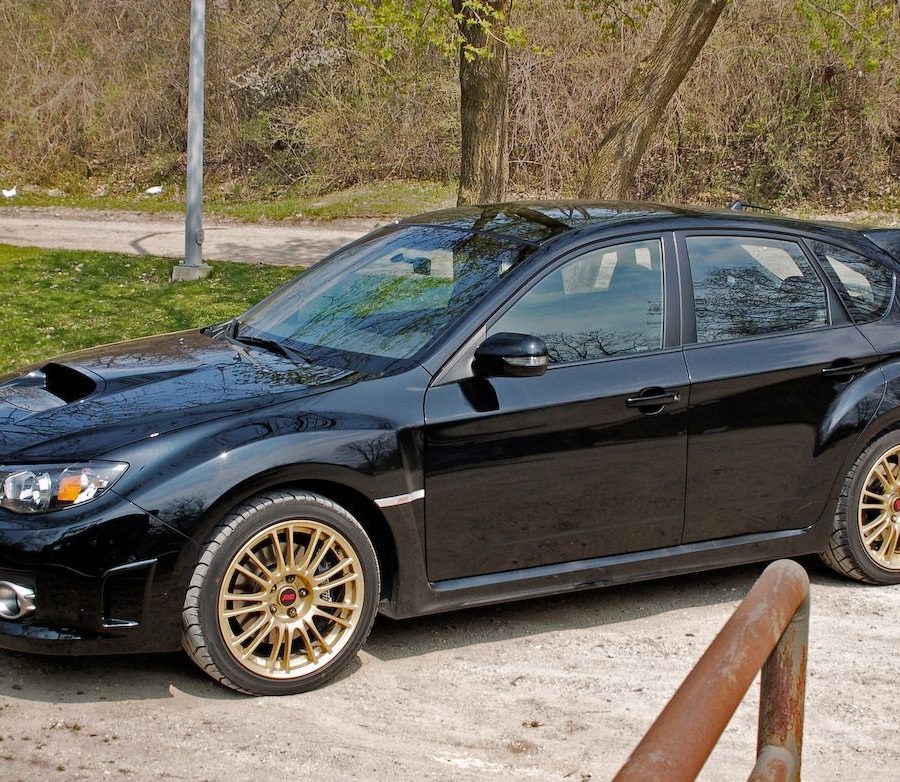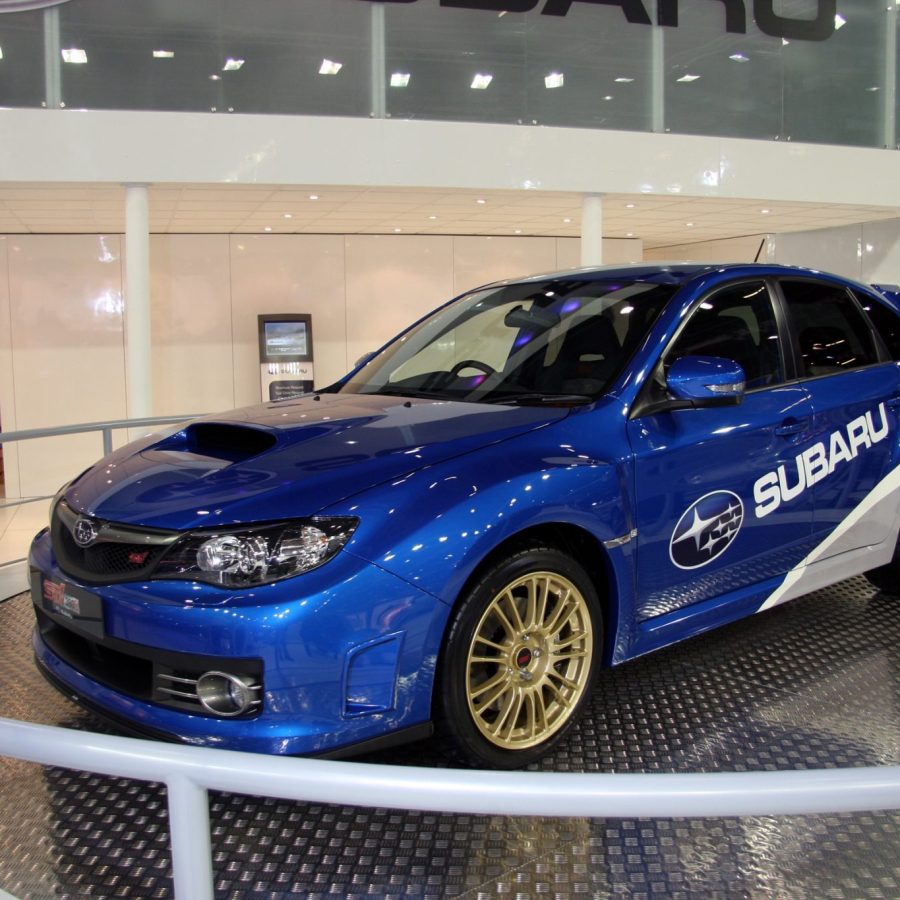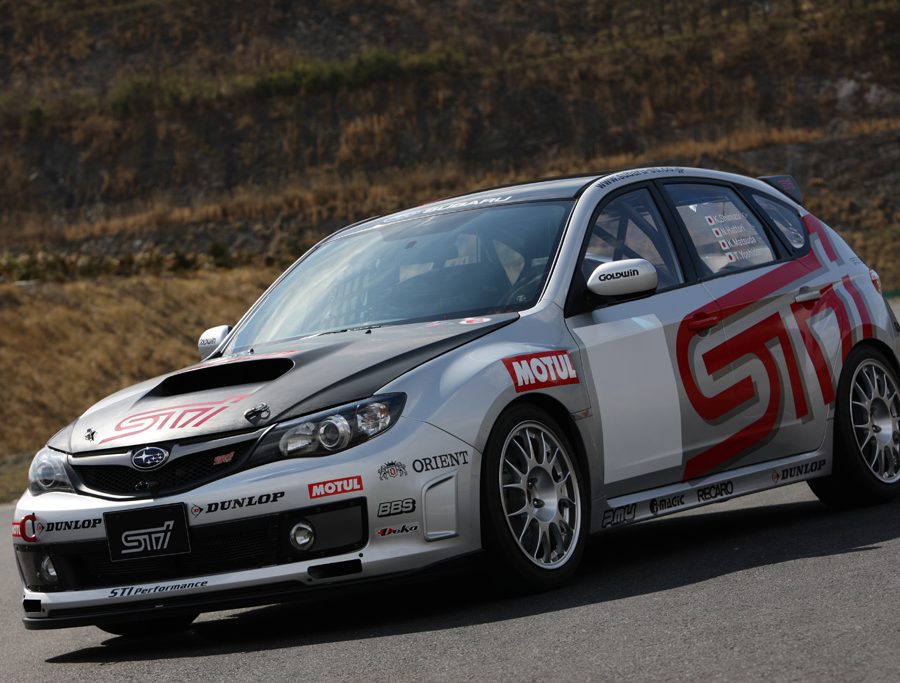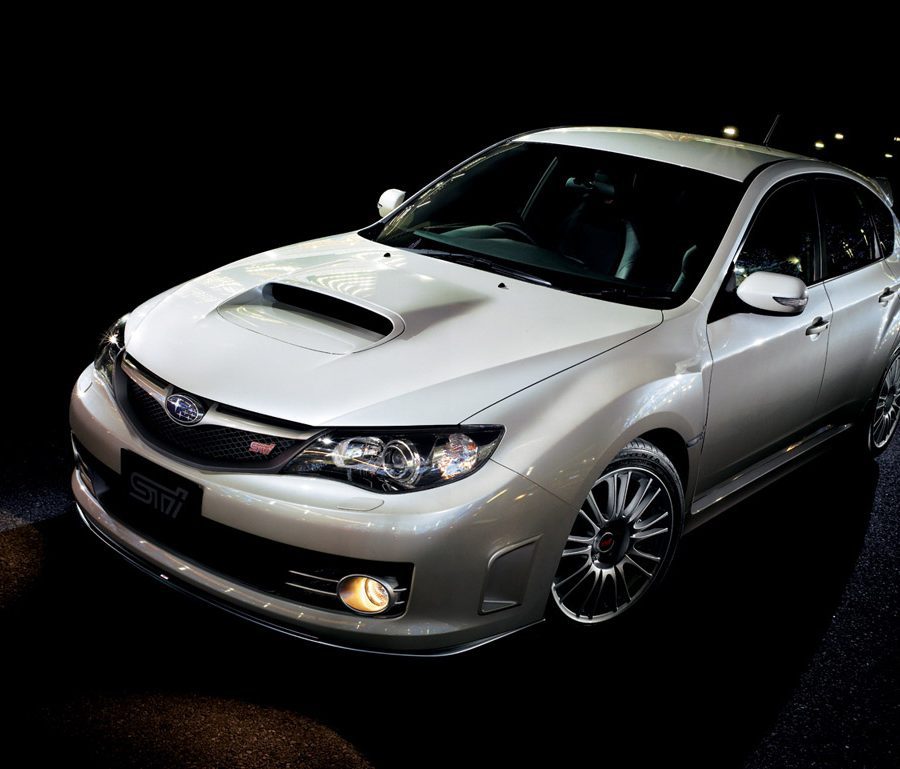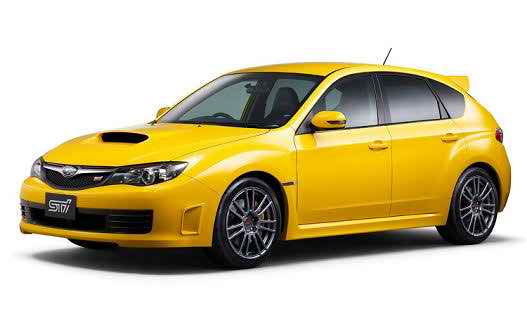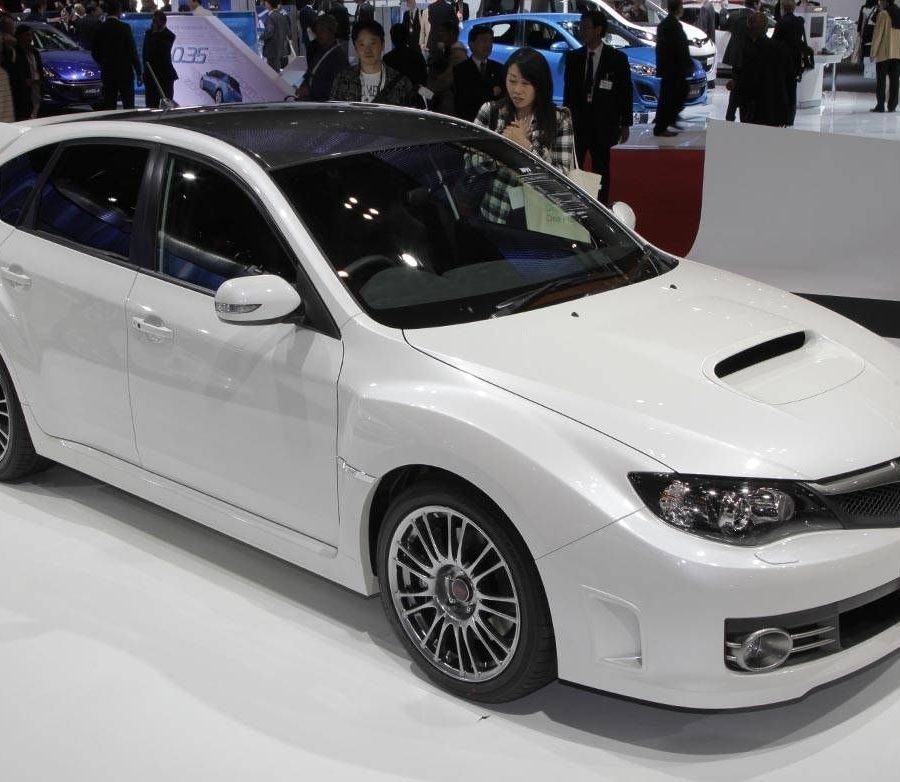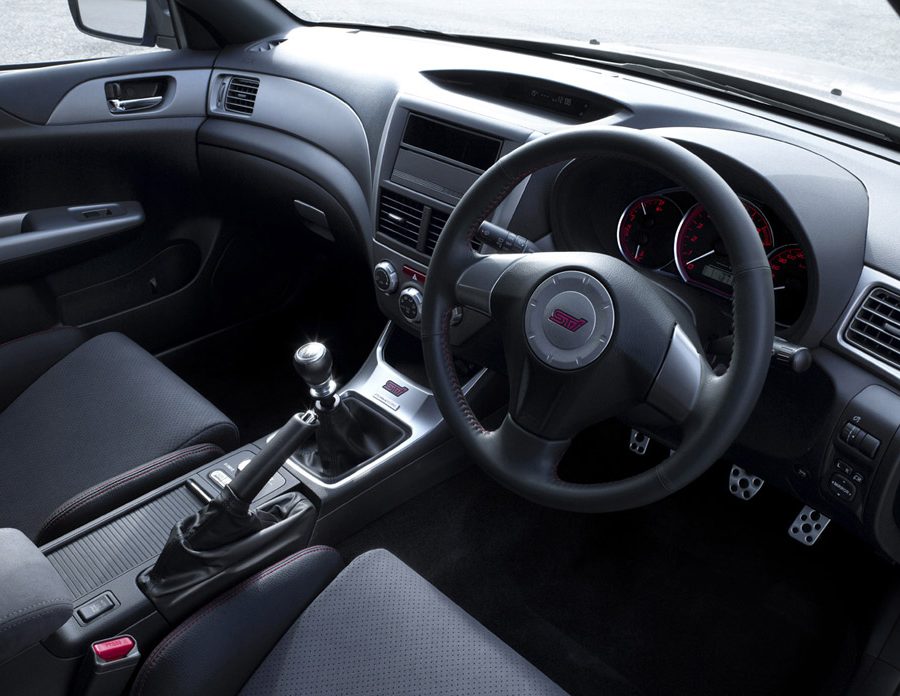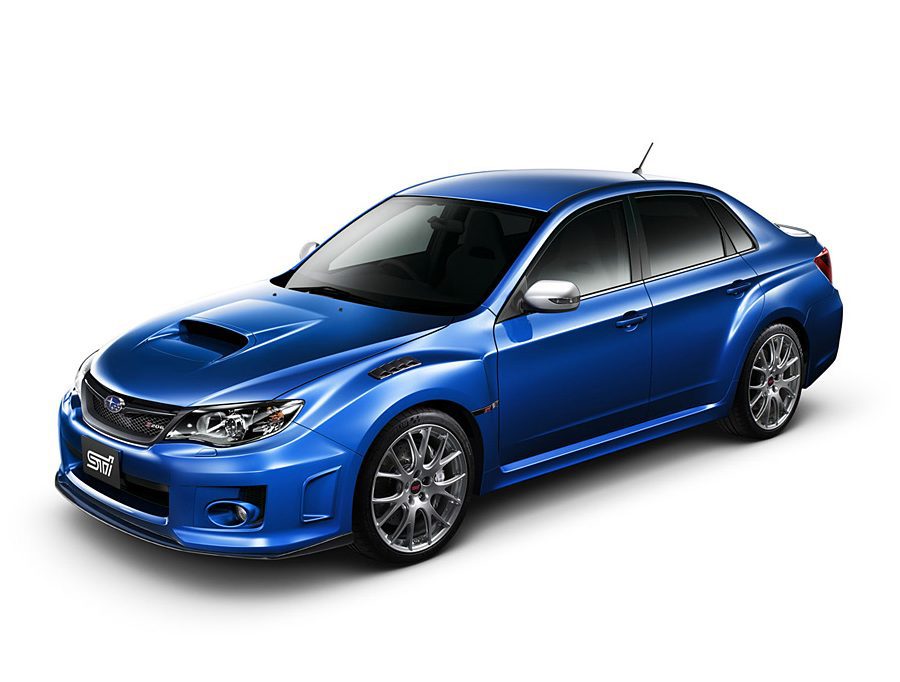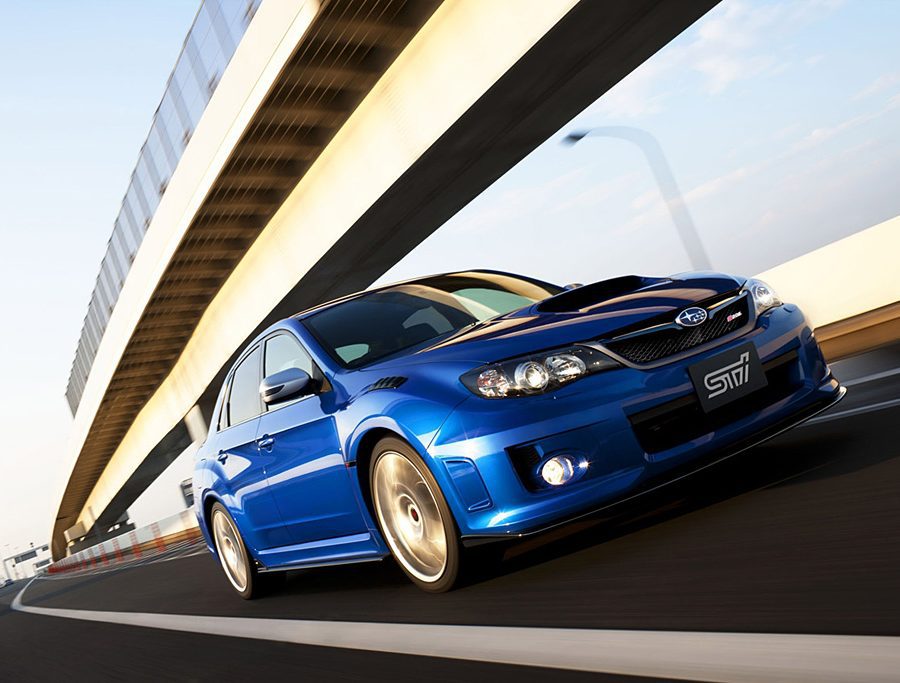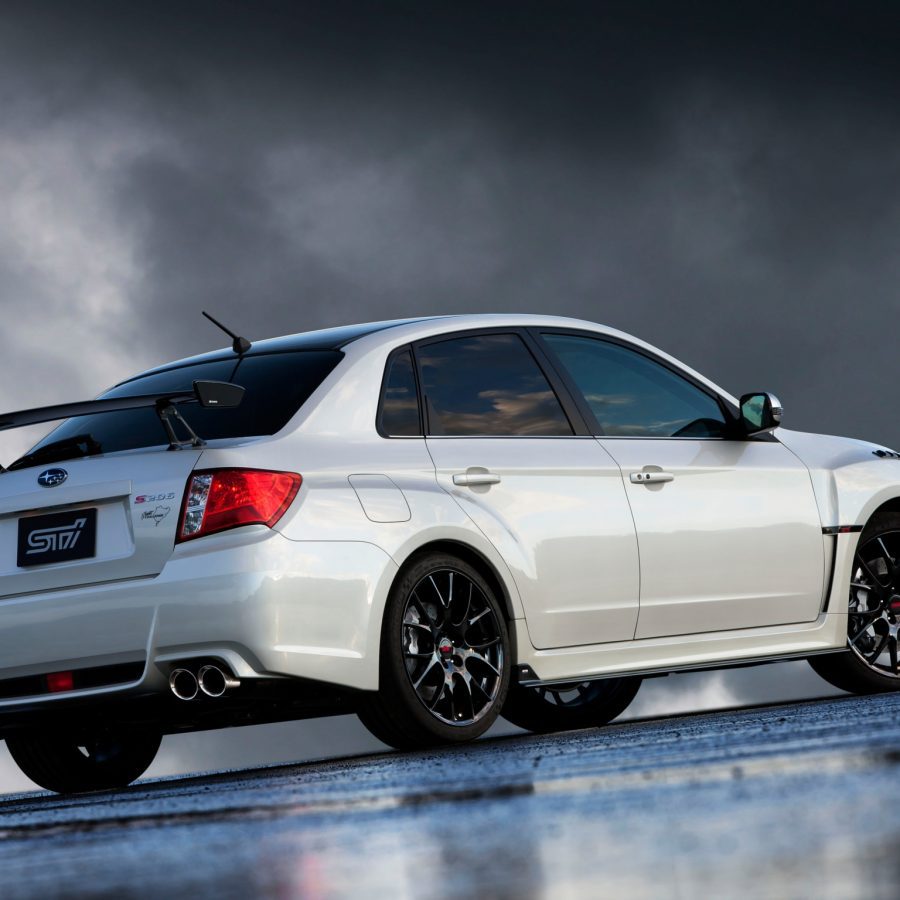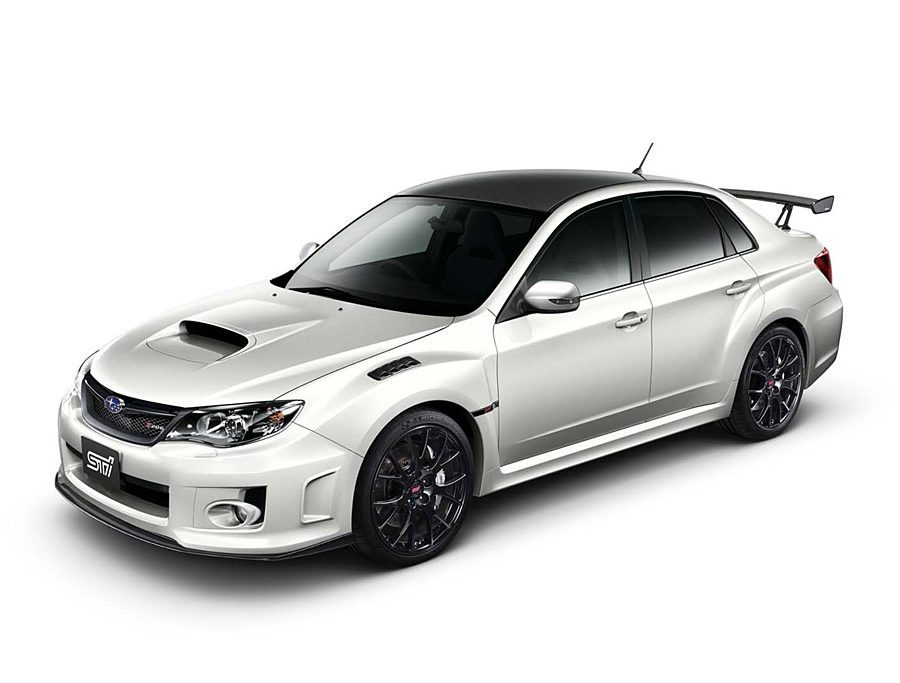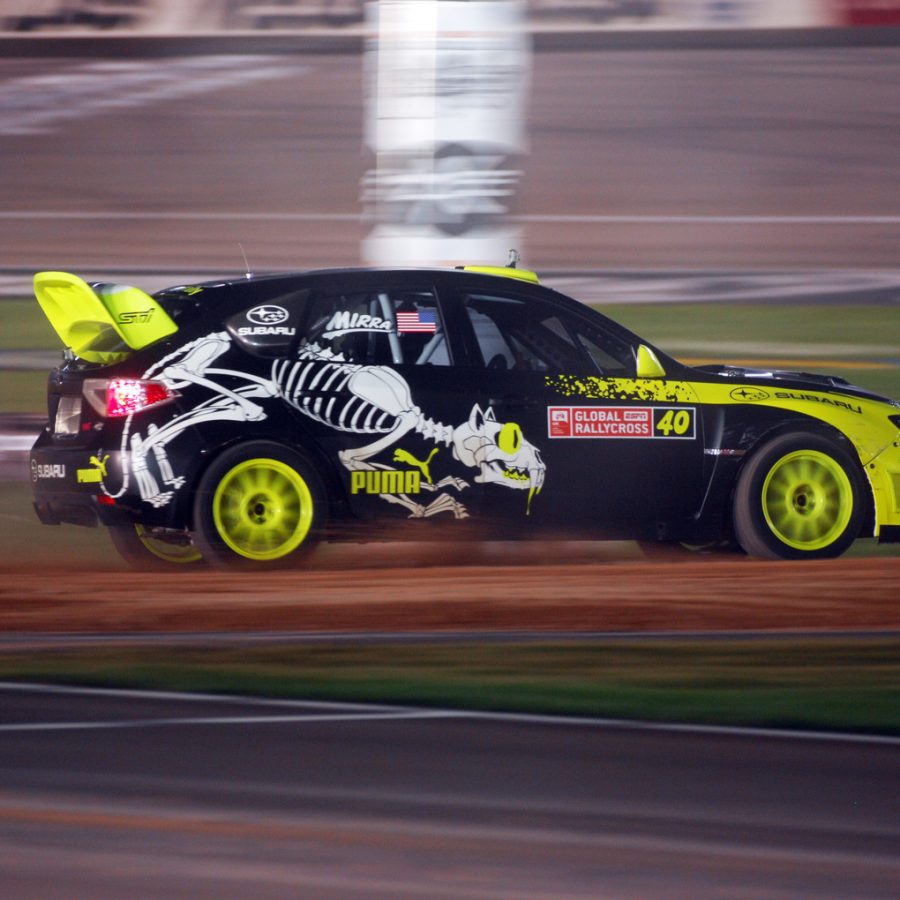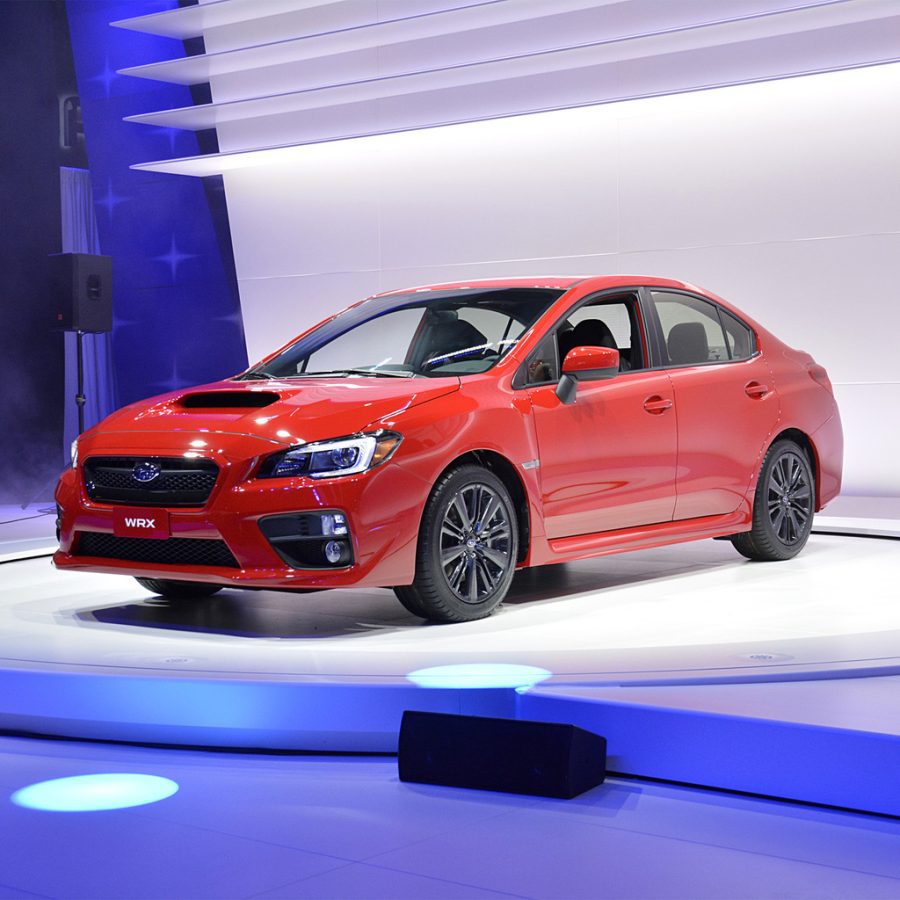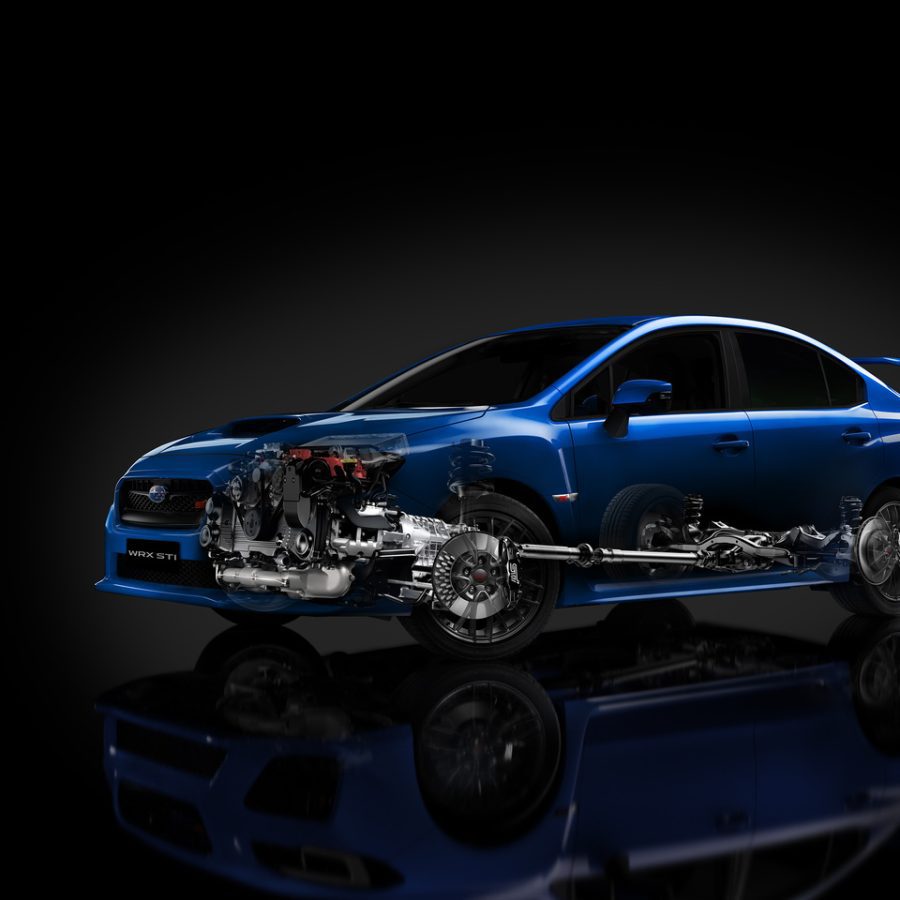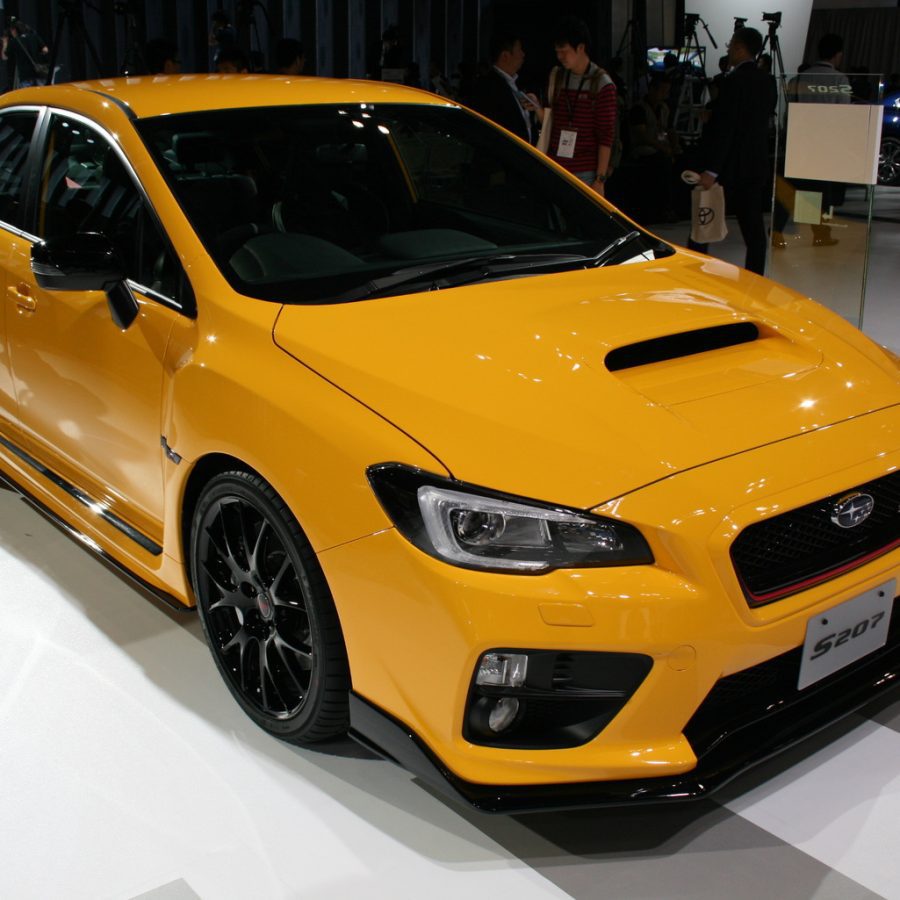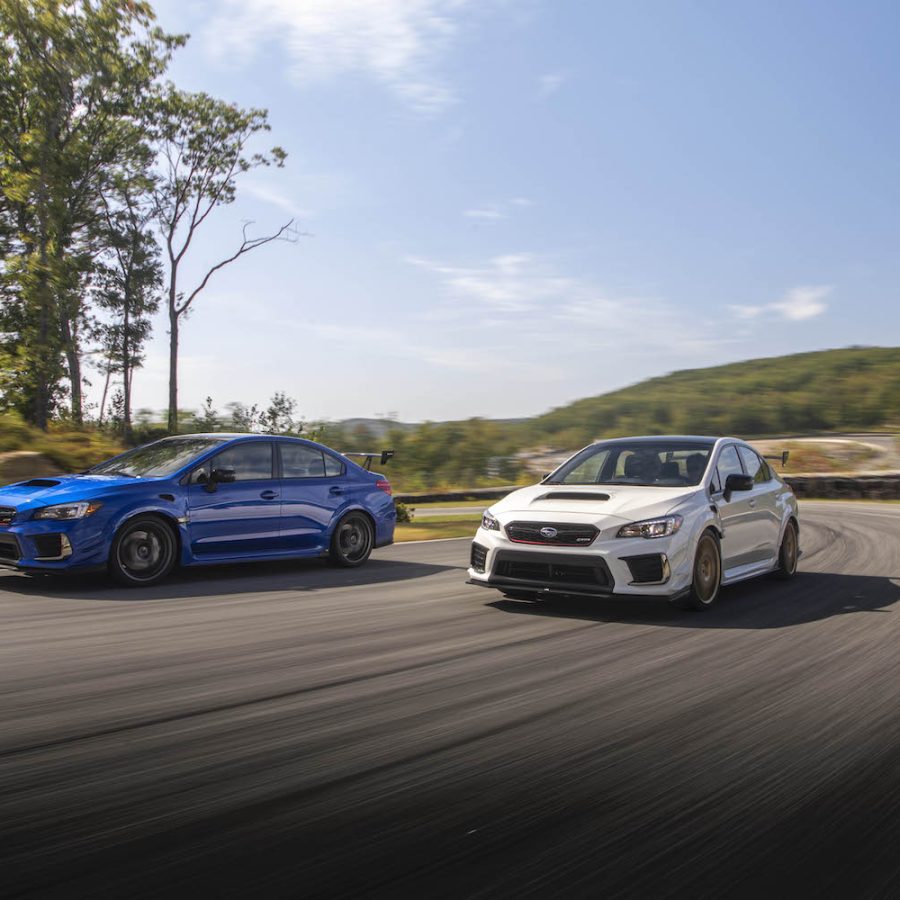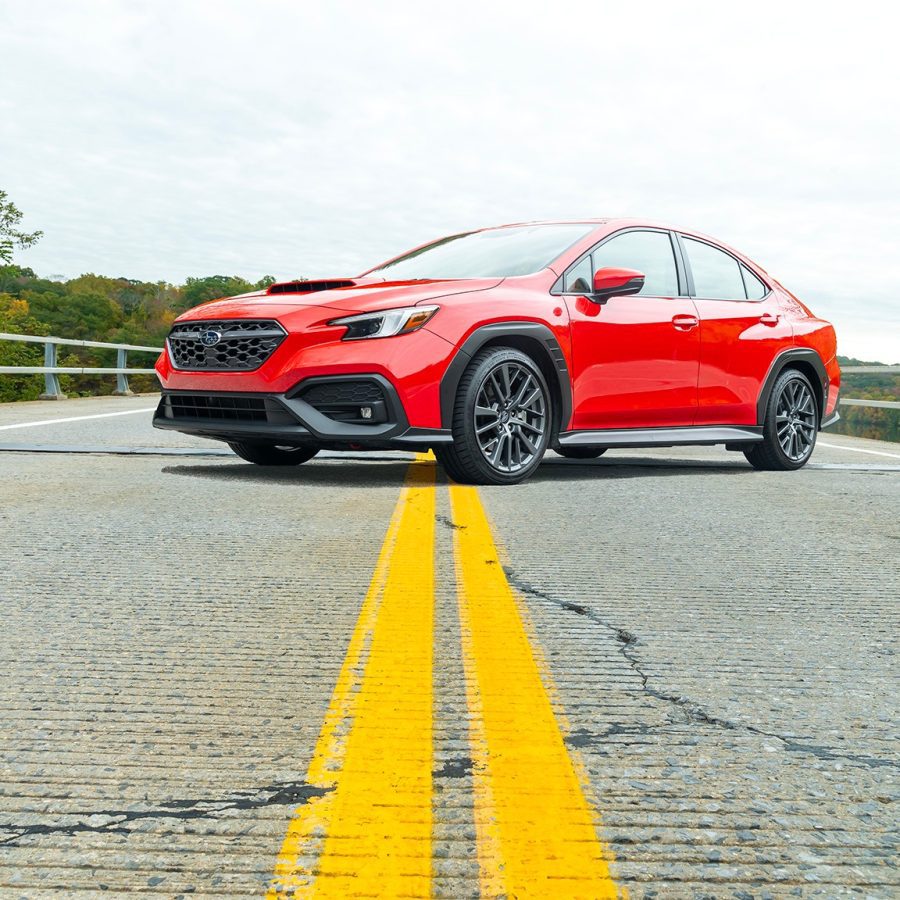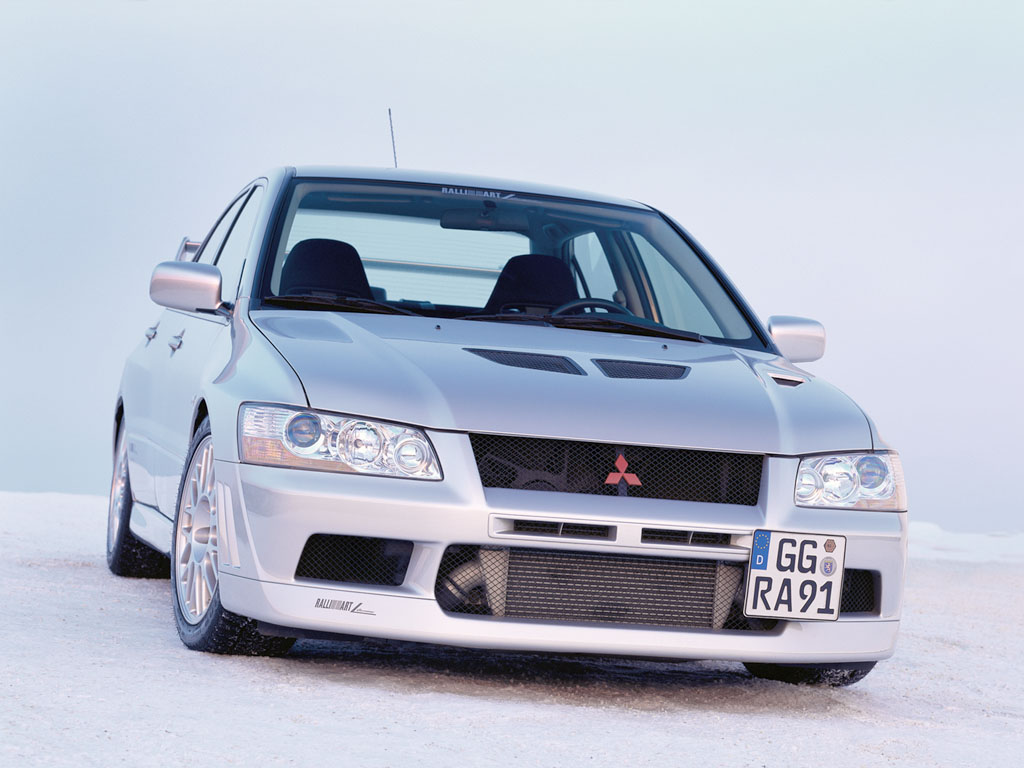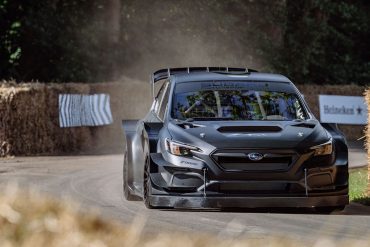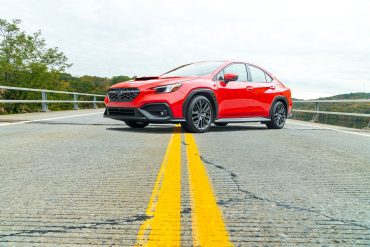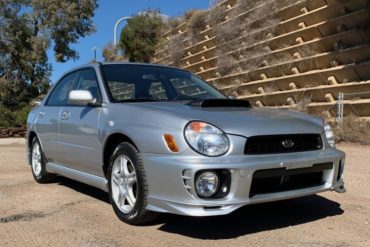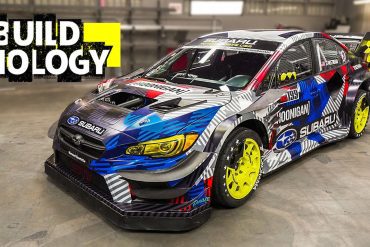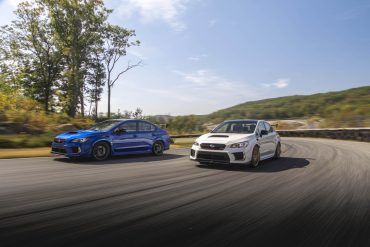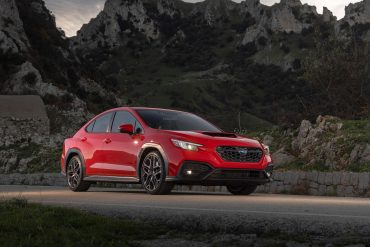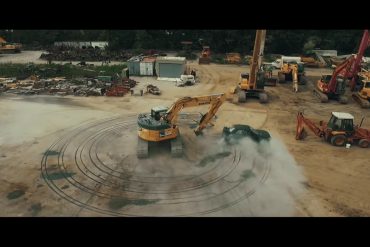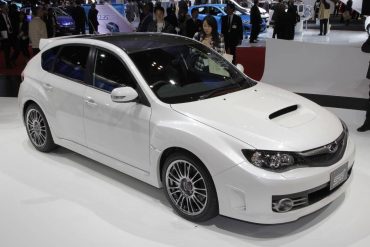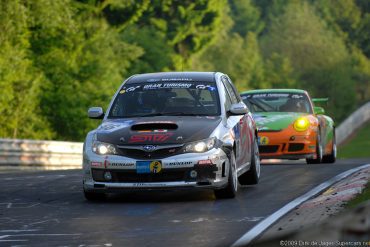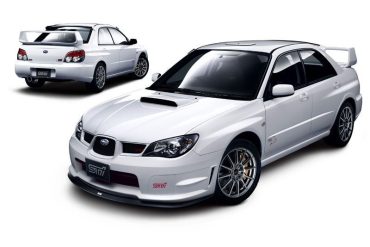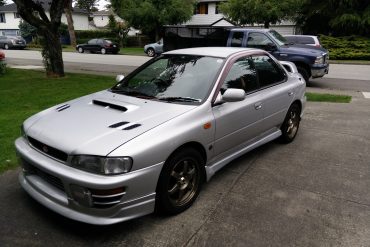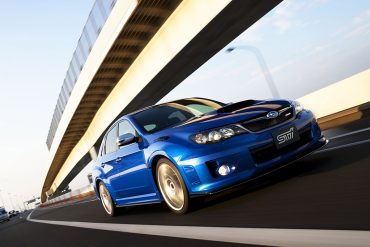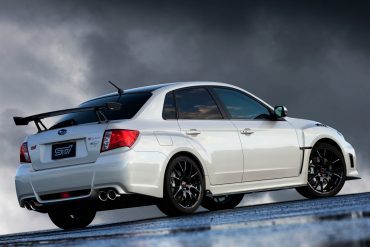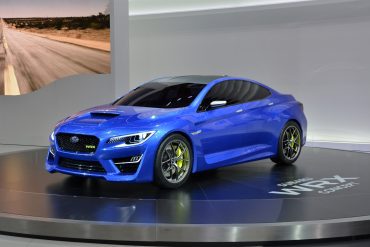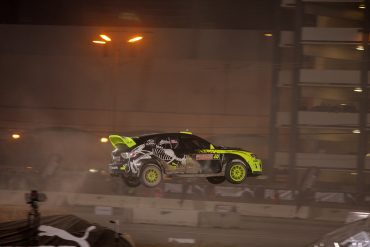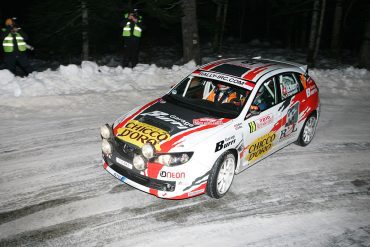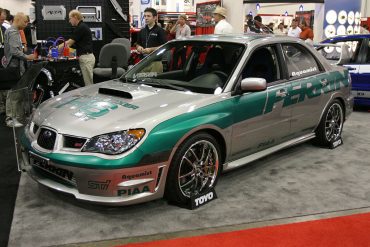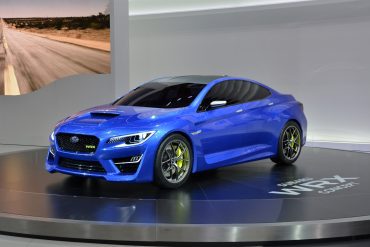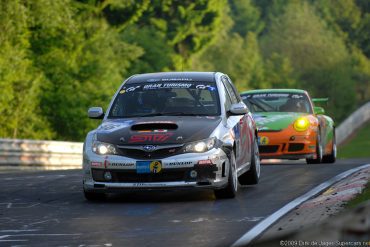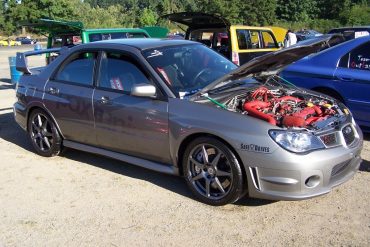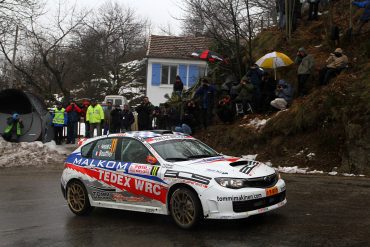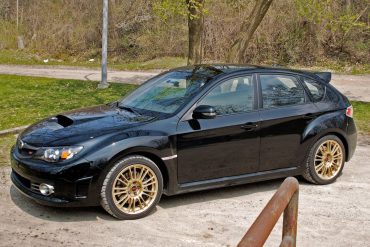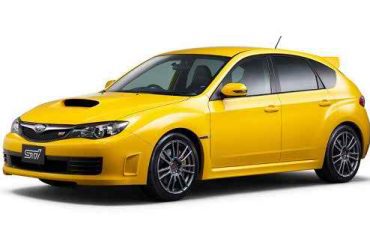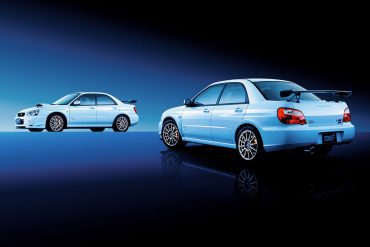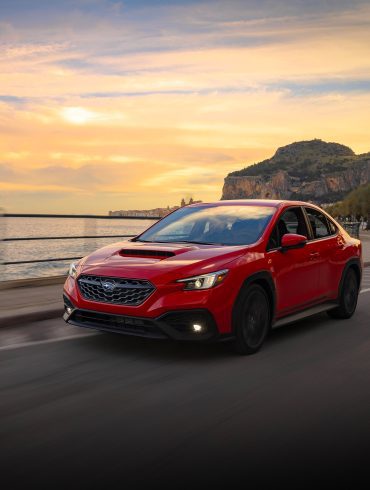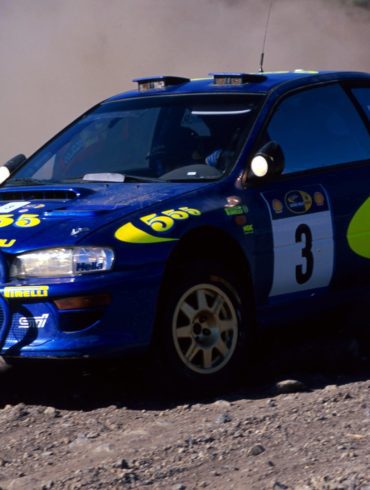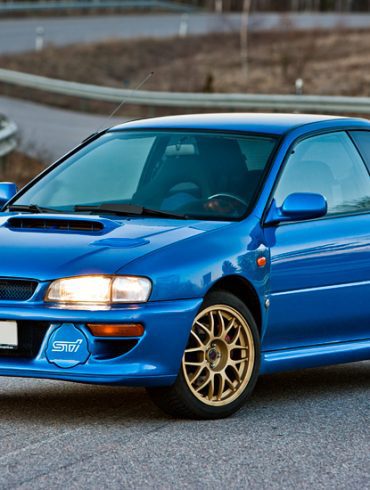1993 Subaru Impreza 555 Following the Legacy RS and its single victory, the Impreza made its competition debut at rally Finland in 1993. Subaru opted to call their competition model the 555 since their key sponsor was State Express 555 who manufactured cigarettes, but were forbidden to advertise under FIA...
Subaru WRX & WRX STi
1992 - Present
Prepare to embark on an epic journey through the exhilarating history of the WRX! This comprehensive guide chronicles the legendary lineage of this iconic sports car, from its rally-inspired origins to its latest high-performance iterations. We'll delve into each generation of the WRX, examining the technological marvels, design evolutions, and heart-pounding performance upgrades that have solidified its status as a cult classic. Whether you're a die-hard fan or simply curious about this turbocharged marvel, get ready to explore.
Overview / Generations / Models In-Depth / Image Gallery / More Updates
The Subaru WRX & STi History, Generations & Ultimate Guide
Subaru's Impreza WRX was born from rally, and the brand owes a large chunk of its motorsport history to one man – Noriyuki Koseki. He's one of a few key people who helped create Subaru Technica International (STI) – the brand's motorsport division. Even before he helped develop world-beating road and race Subarus, he was racing them on his own time and money.
In the late 1960s, Koseki founded a local motorsport club in his native country of Japan, where he is noted for racing a Subaru 360 – a tiny, rear-engine hatchback. The team finished an impressive ninth place at a 24-hour endurance race held at Fuji Speedway, garnering the attention of head office.
A few years later in 1971, he found himself in America, chasing bigger dreams with the factory's blessing. Subaru had just released its new 'FF-1', a revolutionary compact car that featured both fully-independent suspension, and the brand's first use of a flat-four engine. Within a year of its release, Koseki partnered with a new, keen-to-impress Californian Subaru dealer to enter one into the gruelling Baja 500.
Its lightweight and advanced chassis proved advantageous, but its front-wheel drive layout had shortcomings, seeing the car bow-out early. After continual dialogue with the factory, head office in Japan cottoned on to the inherent levels of research and development being carried out. In 1972, the pair become official, with Koseki now employed by Subaru.
Subaru Technical International officially came about in 1988, founded by a group of individuals like Koseki and Kuza, who were involved in the brand's first-ever motorsport efforts. However, poor reliability was a continual theme experienced in the early days. The first job for the newly-minted STI team was to improve on this area, which it did so stunningly a year later in 1989. It used three Japanese specification Subaru Legacy RS Turbos to set the 100,000km FIA World Land Endurance record.
Powered by a new engine at the time – called the 'EJ20' – the trio traveled continuously for 447 hours, 44 minutes and 9.8 seconds, or 18-and-a-half days straight. Pit stops were made every two hours for a driver change and refueling, with tyre change stops made at every 96-hour interval, or every 21,000-odd kilometers traveled, whichever came first.
The first two years of campaigning were almost fruitless, with the brand seeing just one podium in 14 events despite having legends like Markku Alen and Possum Bourne on-board. Subaru's luck turned on the last event of 1991 however, when a young, 23-year old undercard driver by the name of Colin McRae was subbed-in to finish that particular 14th and final event – the British RAC Rally.
Despite not making the podium, the brand saw promise in the young driver. In 1992, McCae was given more responsibility. During round two of the season, and on his third official outing, he pedalled the big and heavy Legacy RS to a historic second place finish.
Despite the powertrain now firing, feedback from drivers and engineers was that the chassis and platform could be improved. The Subaru Legacy was designed from the outset as the brand's flagship, medium-sized sedan, which in retrospect appears contradictory to the ideal platform to rally with.
In the background, Subaru was busy building a replacement for the dating Leone small passenger car, which had served well during the brand's early motorsport efforts.
In October 1992, Subaru launched the Impreza, marking a monumental turning point for the brand. The chassis was all-new and well designed, which gave engineers plenty of headroom in terms of making a quick car. It's rumoured that Australian engineers had a part to play in the design of the Impreza's rear-end suspension system.
True to its word, Subaru claimed it was directly feeding its road cars with a healthy diet of rally car chum. The first road-going Subaru Impreza WRXs equipped with motorsport-derived EJ20 engine and all-wheel drive system were already in the hands of Japanese customers by November of 1992, some nine months before the Subaru Impreza WRC car made its debut at the Finnish Rally in August of 1993.
On its first day out, Ari Vatanen put the car in second place, marking the first podium of many. The Impreza, and its long-list of talented drivers and co-drivers, yielded Subaru three consecutive constructors' championships in 1995, 1996 and 1997, as well as three drivers' championships in 1995, 2001 and 2003.
As testament to its success, the Impreza's trophy cabinet houses 122 podiums – 46 of which were first places – after competing in 193 official events.
With their worldly experience coming together to form Subaru Tecnica International (STI) in 1988, the brand set off to dominate the world rally scene. After a patchy start, things began to pick up in 1991, with humble yet fearless Scottish rookie – Colin McRae – showing promise behind the wheel.
A more significant event would come just after however, with the launch of the all-new Subaru Impreza in 1991. Replacing the dated Subaru Leone small passenger car, it remained faithful to the recipe by featuring a longitudinally mounted, flat-four engine with the option of symmetrical all-wheel drive.
Turbocharged thrills remained too; this time called Subaru Impreza WRX. Claims of it being the beneficiary of World Rally eXperimental technology were no lie, as it featured a toned-down yet familiar version of Subaru's EJ20, 2.0-litre turbocharged flat-four engine. It arrived in Australia at the start of 1994, about 14 months after Japanese customers got their first hands on one.
The WRX was the original turbocharged “pocket rocket” when launched in Japan in 1992 and since then, the Subaru WRX has become a global phenomenon. The three letters WRX, stand for World Rally Experimental, and marked a serious assault by Subaru on the World of Rallying. WRX became an instant icon, winning three consecutive manufacturer’s championships (and the first Japanese automobile company to do so), plus a host of other success including class wins in the 24-hour Nurburgring race. For a generation, rally is defined by the blue and gold colors that is Subaru.
This outstanding motorsport success is a testament to, and a demonstration of, the design philosophy and product concept that successive WRX models offer.
Read on to learn about each generation.
WRX Basics
Manufacturer: Subaru
Also called: Subaru Impreza WRX (1992–2014)
Production: 1992–2014 (Impreza-based models), 2014–present (standalone models)
Assembly: Japan: Ōta, Gunma (Main Plant)
Class: Sport compact car
Body style: 4-door sedan (standalone models)
Layout: Front-engine, four-wheel-drive
WRX Platforms FYI
Before 2015: The WRX was a high-performance variant of the Subaru Impreza. Both WRX and Impreza shared the same basic platform.
After 2015: Subaru decided to separate the WRX and Impreza onto distinct platforms. The WRX had a more focused performance engineering and a sportier character.
"It's a riot to drive. The turbocharged engine is punchy, and the all-wheel-drive system grips like glue."
Motor Trend in 2001
Subaru WRX and STi Generation Guide
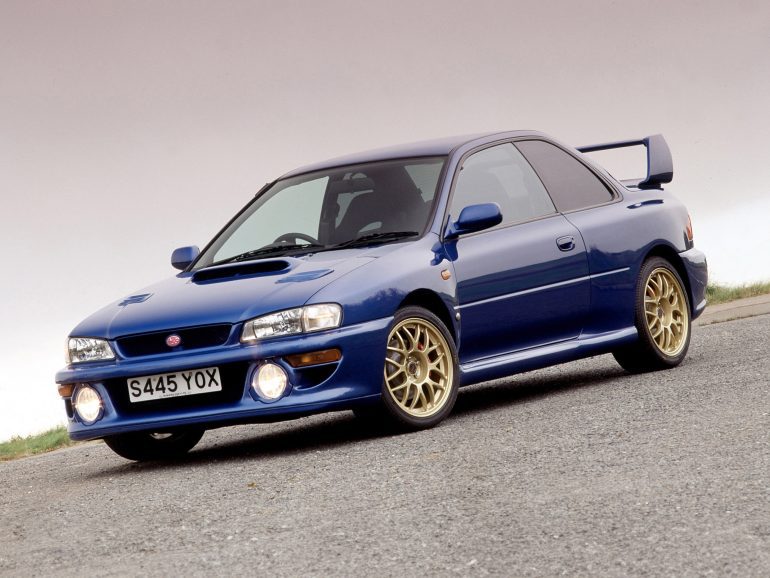
1st Generation WRX Basics
Initial Version (GC8A)
Production: 11/1992-9/1993
Power: 237 hp
Torque: 228 lbft
Weight: 1220 kg
Version I (GC8B)
Production: 10/1993-8/1994
Power: 250 hp
Torque: 228 lbft
Weight: 1220 kg
Notes: Forged pistons, enhanced intercooler with water spray, carbon-fiber tower bar, larger rear spoiler.
Version II (GC8C)
Production: 9/1994-9/1996
Power: 275 hp
Torque: 235 lbft
Weight: 1240 kg
Notes: Increased boost from 0.8 to 0.93 bar
Version III (GC8D)
Production: 9/1996-9/1997
Power: 280 hp
Torque: 253 lbft
Weight: 1250 kg
Notes: Heavily revised engine (MPI, molybdenum piston coating, new IHI turbo, 1.07 bar boost, revised cam timing & lift, larger intercooler), larger brakes.
Version IV (GC8E)
Production: 9/1997-8/1998
Power: 280 hp
Torque: 260 lbft
Weight: 1250 kg
Notes: Revised turbine and intake valve lift; Rear axle adopted Suretrac torque-biasing LSD instead of viscous-coupling LSD.
Version V (GC8F)
Production: 9/1998-9/1999
Power: 280 hp
Torque: 260 lbft
Weight: 1270 kg
Notes: Revised engine (thinner piston rings, revised cam timing and lift, new intake manifolds), inverted suspension struts, ABS, larger rear spoiler.
Version VI (GC8G)
Production: 9/1999-9/2000
Power: 280 hp
Torque: 260 lbft
Weight: 1270 kg
Notes: Mostly cosmetic changes.
Subaru Impreza WRX & STi (1992 - 2000)
The original Subaru Impreza WRX is, for some, still the best iteration of the model to date. It is still the only generation to be offered with a 2-door body shell, most notably as the P1 or 22b, the latter of which being a homologation special.
The most impressive trait of the original Impreza is by fair the featherlight chassis, coming in at just 2,711 lbs. To keep things consistent going forward, performance stats for the WRX STi models will be displayed, just as above, due to the varying outputs from the base or limited edition models. The 250 horsepower output of this Impreza WRX was more than impressive for the early 1990s, and no doubt proved instrumental in securing the multiple WRC successes that Subaru enjoyed throughout the period.
There were six versions of the STi. The different versions were marketed with consecutive numbers. Another way to tell the version of a WRX STi was to look at the chassis code. Sedan STi Model Codes were GC8, Coupes were GM8 and Station Wagons were GF8, followed by a letter from A to G. There was a GC chassis version of the RS released in 2001 as well in the United States.
One common misconception is that every Impreza between 92-01 were "GC8's". The code breakdown is as follows; G - stands for Impreza, C - sedan, M - coupe, F - station wagon, The 8 stands for the 2.0 L turbo motor. So really, there are many combinations. A coupe STi would be GM8, sedan GC8, wagon GF8. Also, the code for the coupe American 2.5RS's were GM6 (6 standing for the 2.5 L N/A motor) A JDM STi Coupe has the code GC8. For example, a version 4 STi coupe has the code GC82DD, with the 2 representing 2-doors.
Version I (10/92 – 08/94) - GC8A/B
The first STi was known simply as WRX STi (there was no "version" moniker added to the name until the version II). 100 Imprezas per month were produced starting from February 1994. In March, production was stabilized to 100 STis a month. It had 250 PS (184 kW; 247 bhp) at 6500 rpm and 31.5 kgf·m (309 N·m, 228 ft-lb) at 3500 rpm and weighed 1230 kg (2,710 lb). Before the STi, the highest trim line of the Impreza was the WRX and the WRX RA, first manufactured in November 1992. This version of the STi was the only version where the standard cars were taken at the end of the assembly line and replaced by STi parts. After this version, the standard STi was built alongside the WRX on the production lines.
The WRX STi Type RA (marketing has made usage of the RA acronym in various ways; Record Attempt is the current usage. "R = Racing, A = Group A, FIA the racing class the WRC Impreza competes in" has also been confirmed by Subaru of Japan; the correspondence can be seen on the discussion board for this article) produced 275 PS (202 kW; 271 bhp) and 32.5 kgf·m (319 N·m, 235 ft·lbs) of torque. This version of the WRX STi was a stripped out car that had no sound-deadening, radio or air-conditioning. It came sparsely equipped as it was to be sold to racing teams that would throw out the cheap parts for racing parts. This version of the WRX came with a Driver Controlled Center Differential (DCCD). This device was an electromechanical differential that could lock the differential. The DCCD would be beneficial to people who used it in various rally conditions.
Version II (09/94 – 08/96) - GC8C
The regular STi's engine output stood at 275 PS (202 kW; 271 bhp) and 32.5 kgf·m (319 N·m, 235 ft-lb) of torque. This was the year that STi started painting the intake manifold red. The car weighed 1,240 kg (2,734 lb) and had gold wheels like those on the World Rally Championship Impreza. The V-limited STi edition was produced.
It was a limited edition that was often used to celebrate a Manufacturer or Driver title award to Subaru's World Rally Team. The interior is colored blue on the seat inserts and carpeting. The WRX Type RA STi received a radio and air-conditioning in the V-limited form.
1000 WRX STi Version 2 Vlimited were produced. 555 (the cigarette brand that was the premier sponsor of the Subaru World Rally Team and became synonymous with the Impreza WRC livery) WRX Type RA STi Version 2 V-limited were produced.
Version III (09/96 – 08/97) - GC8D
The engine was vastly updated and was given the name Boxer Master 4. It developed about 300PS but output was reported at the then-established gentlemen's agreement power limit of 280 PS (210 kW; 280 hp). Torque peaked at 4000 rpm with a value of 35.0 kgf·m (343 N·m, 253 ft-lb). In standard form, this version has a top speed of over 240 km/h. The car gained 10 more kilograms and weighed at 1,250 kg (2,756 lb).
The STi shared the same face lift that the rest of the Impreza line received. With Version III came the start of the coupe version of the WRX STi. It is called the WRX Type R STi. The coupe was chosen by Prodrive for use in the WRC because it was smaller, lighter and stiffer than the 4-door version. It was essentially a 2-door version of the WRX Type RA STi meaning it had DCCD, minimal sound insulation, close-gear ratios and hardened gearbox. This car also has a water-spray nozzle to dampen the top of the intercooler.
The water will then evaporate, taking heat away from the intercooler and cooling the intake charge. This car was produced on an order-only basis. Also, there was a WRX STI type RA (4-door) available in Version III. These have the same motor, gearbox and R180 diff as the Version III WRX STI Type R, including DCCD, aluminum bonnet and front guards, no sound deadening and thinner glass. The ECU is also an exclusive tune. The Type R tends to be a bit stiffer and weighs 1,190 kg (2,600 lb). The DCCD has been known to bite new drivers in the wet.
The RA gets a roof vent instead of map lights, and wind up windows, although electrics are an option from factory. Also available was a WRX Type R V-limited, in version III. It has a WRX motor with no forged internals like the STI, and it misses out on the 4 pot front brakes as they are to be installed by rally teams. It has a roof vent and is lightweight, making a good base for a rally car. Version III STI runs a VF23 IHI ball bearing turbocharger while the JDM non-STI gets a VF22.
Version IV (09/97 – 08/98) GC8E
Power remained at 280 PS but torque was raised from 253 lbs./ft of torque to 260. Forged pistons were also added. The interior and the cockpit were changed into a newer design along with the new "White colour" gauges.
Version V (09/98-08/99) - GC8F
The power stayed the same as the previous version 280 PS . The engine layout and design was made cleaner and was dubbed as the Boxer Phase 2 engine. The facelift the rest of the Impreza line had was also applied to the STi. The WRX STi weighed 1,270 kg (2,800 lb). There were 1000 WRX Type RA STi Version 5 Limited cars and the WRX Type R STi Version 5 Limited cars had a 4 month waiting period for each order. The interior was also changed slightly from the Version 4 including seats and steering. This model was also produced as a 555 limited edition.
Version VI (09/99-08/00) - GC8G GC8G
Again the power stayed the same. Most of the changes were cosmetic. The wing was sculpted to be more aggressive. There were 2000 WRX STi Version 6 Limited, 1000 WRX Type R Version 6 Limited and 2000 WRX STi RA Version 6 Limited cars produced. Also 500 WRX STi Version 6 Limited Hatchback models.
Japanese Special Variants
22B STi (03/98 – 08/98)
In 1998, Subaru of Japan produced a wide body, 2-door, Impreza called the 22B STi. The 22B was used to commemorate both Subaru's 40th anniversary as well as the 3rd consecutive manufacturer's title for Subaru in the FIA World Rally Championship. On the release of the sales, all 399 sold out from 30 minutes to 48 hours, depending on the report. The cars had the starting VIN code of GC8E2SD. Another 25 were produced for export markets - see the 22B Type UK below. The 22B had the EJ22 engine as opposed to the regular EJ20 engine. (Note internal Subaru material states the block comes from a V3 EJ20G NOT the EJ22G as most think. Also the intake manifold and heads were for the V4 EJ20K) This means the displacement was increased from 1994 cc to 2212 cc. The block is a closed-deck design. The heads (valves, valve train and such) were lifted from the STi Version 4 engine. It produce 350 PS (260 kW; 350 hp) at 6000 rpm and 363 N·m (267 ft-lb, 37.0 kgf·m) of torque at a lower engine speed of 3200 rpm. The redline was lowered from 8000 rpm to 7000 rpm. The compression is an 8.0:1. The turbocharger is an IHI RHF 5HB (the internal company usage code is VF23).
This car was given a unique color of blue and had fender flared wide body taken from the Peter Stevens designed WRC car, thus widening the width by 80 mm (3.15 inches) for a total of 1,770 mm (69.7). During assembly, a WRX Type R chassis was taken off the line. The fenders were replaced with the 22B STi fenders. The car's curb weight is 1,270 kg (2,800 lb). The suspension is provided by Bilstein. The brakes were standard 4-piston/2-piston brakes. However, the color is red and the Subaru name cast on the brake calipers and painted white. The wheels were increased in size from the standard WRX Type R STi from 16x7" to 17x8.5" BBS Elektra wheels. The car is shod with 235/40 ZR17 Pirelli P Zeros. The clutch was upgraded to a sintered twin clutch with a ceramic disk.
The transmission ratios are the same as the standard WRX Type R, but the gears were shot-peened for added reliability. The car has a unique hood, a WRC-inspired front bumper and a unique adjustable rear wing. The origin of the name 22B has often been debated. Many assume 22 referred to the 2.2 liter displacement and the B was for the Bilstein suspension. This would correlate with the idea that Subaru sells a Legacy Spec B, where the B represents the Bilstein suspension. Others believe that 22B was meant to represent the much recognized 555 decal (555 is a tobacco company that was a major sponsor for Subaru in the WRC) on the WRC car as 22B is a hexadecimal representation of the decimal number, 555. It must be noted that the 22B STi that is supposed to be #13 was never given the plaque. Subaru of America imported #13 to be used as a press car.
Three 22B STis were given the #000 plaque, 2 went to the World Rally car drivers for Subaru at the time Colin McRae and Nicky Grist, with the third being used by Subaru Japan as their press car. It was widely rumored David Lapworth of Prodrive owned the third #000 car, however he actually owned #400.
S201 STi (2000)
Subaru Tecnica International started the S-series of special Imprezas. This series is a limited production series that sports an engine output of greater than 280 PS (210 kW; 280 hp) [had 224 kW (305 PS)] (special variant cars were excluded from the gentlemen's agreement). The car was decked with nearly every single part from the STi catalogue.
The S201 was a 4-door STi that sported the only body-kitted S-series WRX STi. It had a tri-planar wing and a massive front airsplitter. The entire suspension was composed of STi parts. There were 300 S201s produced, they used a VF28 spec turbo, with max boost at 1.2 BAR and produced 224 kW (305 PS) and 353 Nm, weighing in at 1270 kg these are a highly desirable variant.
United Kingdom Special Variants
22B Type UK (1998)
16 of the 'export' 22Bs (see above) were modified by Prodrive, with longer gear ratios, UK specification lights and an official 3 year warranty. Because 50 22Bs had already been imported privately into the UK, Subaru UK had to wait until 1999 to register the 22B Type UKs under the VCA's Single Vehicle Approval scheme. The price was £39,950, approximately the same price that grey import 22Bs were being sold for.
P1 (2000)
To counter the grey imports of high-performance Japanese variants, Subaru UK commissioned Prodrive to produce an 'official' limited edition of 1,000 two-door cars in Sonic Blue. The chassis was a 2-door coupe. They were taken from the STI Type R lines and used for the P1. The car was the only coupe version of the WRX STI GC chassis to receive ABS. In order to allow for ABS, the DCCD was dropped.
Engine output was boosted to 276 bhp (206 kW; 280 PS), and the suspension optimized for British roads. Options were available from Subaru consisting of 6 piston front brake calipers, electric Recaro seats, 18" OZ alloys and a P1 (Prodrive) stamped backbox. The P1, or Prodrive One, is echoed in the name of the Prodrive P2 concept car.
Subaru Impreza WRX & STi (2000 - 2007)
Despite a total of 6 small updates being carried out on the original model (dubbed 'versions' in the Subaru community), after 8 long years in production, Subaru knew a total redesign was overdue. The second generation Impreza shown here acquired the nickname of 'Bugeye' for the signature front-end. In 2001, this was Impreza's complete update.
Subaru had picked things up a touch here, most likely to counter the additional weight that the Impreza had gained, up almost 500 lbs from the first generation. Horsepower shot up to 265, which meant 0 to 60 mph, and top speed figures remained fairly constant.
Inside though, the Impreza really leaped forward, with a much more modern interior redesign. This was also the first Subaru Impreza to be offered in American markets, albeit now without a 2-door option.
It's safe to assume that the second generation Impreza was aging swifter than the first, as only 4 years passed before Subaru decided a tweak in design was necessary. The 'Blobeye' Impreza was the result, a much-revered generation that looked epic in flagship trims, sporting huge rear wings and aggressive bumpers.
The last redesign of the second-generation Impreza is quite possibly one of the most beloved generations to date, following closely behind the original. Dubbed the 'Hawkeye', this third redesign had a much more aggressive front-end than previous models, hinting strongly at the potential that lay within.
That potential had certainly increased too, with WRX STi models benefiting from a sharp uptake in both power and torque. The flagship Hawkeye now sent 293 horsepower and 290 lb-ft to the wheels, resulting in a drop of 0.3 seconds in 0 to 60 mph time, and an extra 10 mph to be had at the top end.
Among the obvious visual changes, this model also came with several modifications under the hood, including a re-vamped 2.5-liter engine, responsible for the notable increase in performance.
The version nomenclature was dropped from the name. Japanese and other auto-enthusiasts often refer to the chassis as GDB/GDF (the STi has a 'B' or 'F'(for USDM models) where as the regular WRX had an 'A'). The fourth character of the VIN gives the revision (A to F where G is the 2007 version). For quick and easy reference to the different exteriors, Subaru Impreza owners use nicknames based on the headlights. Each relates to a creature that has similar looking eyes: 2002-2003 are 'bug eyes' / 2004-2005 are 'Tear Drop' or 'blob eyes' / 2006-2007 are 'hawk eyes'.
Japanese-spec Variants
Rev. A (2001)
In 2001, the WRX STi received the aforementioned updates. The WRX Type RA STi was produced. The STi wagon was still produced but its engine only produced 275 PS (202 kW; 271 bhp) . The STi fog light covers had white STi lettering on them. The WRX Type RA STi was used for the Group N homologation.
Rev. B (2002)
Along with the rest of the Impreza line, the grille and body of the WRX STi was lightly updated by Peter Stevens to give it a more angular look when seen from the side. The fog light covers had pink STi lettering. Not much else besides minor suspension improvements and a small increase in torque output was done. The WRX Type RA STi was dropped for a new WRX STi Spec C. This model was much lighter than the WRX Type RA as it received lighter glass and body panels.
The Spec C's handling was much improved due to an increase in caster (from 3.5 degrees to 5 degrees). This was achieved not by changing the suspension mounting point, but by lengthening the wheelbase (15 mm). This was done by including different control arms. This increased caster significantly helped the turn-in capabilities of the car.
Rev. C (2003)
Little change from Rev. B. The WRX STi was used for Group N homologation.
Rev. D (2004)
The WRX STi received the same Peter Stevens-designed facelift that rest of the Imprezas received. The WRX STi is now capable of being ordered with DCCD. The WRX STi Spec C Type RA was released. It sported a carbon-fiber wing and a carbon fiber lip. It also had a new set of BBS wheels as well as a newly tuned engine. The WRX STi V-Limited was released. It sports 4-way dampers tuned by Subaru World Rally Team's Group N driver Toshi Arai. The WRX STi was used for Group N homologation.
Rev. E (2004)
This was the first Impreza STi model to be offered in the United States. Subaru unveiled this model in the Detroit International Auto Show, only 1 month after Mitsubishi announced the arrival of the 271 horsepower Lancer Evolution 8, which out-performed the 2.0L WRX. The 2004 WRX STi is considered to be the lightest (3263 lbs, official brochure and tested by Car & Driver Magazine) and rawest among 2004-2009 models. The car was sold without a radio or floor mats. The car was rated at 300 bhp and 300 lbs-ft torque, although many feel it was under-rated on purpose.
What made the car so special to most is the level of performance offered for a mid 30 thousand dollars car, that still has a back seat and a big trunk. Since its launch, many upgrades became available to increase power, handling and braking capabilities. Some weak links were discovered in most 2004-2007 models since the 2004 debut. The IHI VF39 turbocharger wastegate may develop cracks that may or may not affect performance.
Rev. F (2005)
The WRX STi receives the same increase in wheelbase as the Spec C. All STis received additional rear fender flaring in order to allow an increase in wheel size. The wheel size went from 17" x 7.5" to 17" x 8". In accordance with the increased wheel width, steering lock-to-lock turns have been reduced.
A whole new center console now brings out a very high grade interior feel. The WRX STI continues on relatively the same. The Impreza line's looks have been updated. The WRX STI Spec C's receives the Arai tuned dampers and a 21 mm (0.8 in) swaybar.
The rear suspension is changed from rubber bushings to pillow ball bushings. The strut tower was further stiffened for improved handling and stability. The strut towers were reinforced for better handling and better ride characteristics. The engine mounts were changed from metal to liquid-filled plastic mounts to reduce vibrations into the car's cabin. Some 2006 owners have had issues with these plastic engine mounts.
The DCCD is updated with the use of a torque-sensing mechanism inside the DCCD. The torque split is changed to 41/59. The WRX STI Spec C was used for Group N homologation. The WRX STI Spec C Type RA was released in November 2005, with 350 units produced.
Rev. G (2007)
The WRX STI and STI Spec C is mechanically similar to the previous revision. Changes include a different turbocharger VF43 equipped with a slightly larger wastegate port to prevent boost creep (VF43, as opposed to VF39 in the older version) and revised gearing on the 6 speed manual transmission. They also use top feed injectors instead of side feed injectors like the previous STi models(04-06USDM). This means the intake manifold is a bit different as well as the TVG (Tumble Valve Generators) used for emissions on cold startups. Subaru also significantly reduced the size of the restrictor pill in the boost control system.
Japanese Special Variants
S202
This car was an S-series Impreza based on the Spec C. All of the suspension and powertrain parts included STi parts from the STi part catalogue. The interior included special edition yellow seats with red STi logo stitching. A smaller, lightweight AC compressor was fitted to save weight. The brake rotors were gas slotted. The wheels were STi labeled Rays Volk alloys.
S203
This limited edition Subaru was an S-series Impreza based on the WRX STi. Again it is basically a car with all the STi parts available. It was sold with custom made 18-inch (460 mm) BBS alloys with Pirellis.
S204
The new S204 was released at the end of 2005. It is based on the WRX STi and similar to the S203. It does away with the roof spoiler and has a different grille from the rest of the Impreza line. T
he S204 has a two-litre (EJ20) H4 engine capable of developing 235 kW (320 PS; 315 bhp) and a six-speed manual gearbox. When cruising the S204 achieves 100 km/h (62 mph) at 3000 rpm in top gear and can reach 220 km/h (137 mph) at 6000 rpm. Suspension can be described as 'stiff' with torsional rigidity enhanced by the inclusion of laterally mounted items described as "performance dampers" bearing both the STi logo and Yamaha. As a result cornering can be described as excellent.
The addition of a carbon fibre front-lip spoiler and a rear diffuser on an already low suspension setup plus the use of low-profile Pirelli P Zero (Corsa) tyres implies the S204 is intended mostly for sealed road use. Recaro has used carbon-fibre extensively in the manufacture of the driver and front passenger seats available in the S204. The high side bolsters provide significant support to the driver during maneuvers that induce lateral forces and are considered to be an integral feature to the cornering performance of this vehicle. The seats are rigid in design and have relatively little cushioning compared to other Impreza Models. Internal rear view of Recaro Seats in the Subaru S204.
WRX STI Spec C Type RA-R
At the end of October, 300 2007MY WRX STI Spec C Type RA-Rs were open for ordering. These cars are based on the WRX STI Spec C. The wheels are changed for 18-inch (460 mm), STI-branded, Enkei-made, white wheels. The engine has been blueprinted and balanced. It produces 320 PS (235 kW; 316 hp) of power. The suspension is built with the latest STI parts from the STI catalogue. The front brakes are 6-piston brembo brakes. The brakes are made so that they change from silver to gold when heated from usage. The rotors are slotted. The 2nd R in "RA-R" is stated by an STI engineer to mean "Radical”. February 2007 Edition Best Motoring Interview of STI engineer at 7:00
WRX STI A-Line
This WRX STI A-Line is mechanically the same as the Japan-spec STI. The exterior has been toned down with the removal of large rear spoiler, black Brembo brakes, titanium colored Enkei wheels, a black STI front lip and leather seats in order to target the more mature market.
Asia, Oceania and European specifications In 2001, most of Asia, Oceania and Europe received the new STi. The engine was detuned to meet emission standards.
Engine output was variously rated from 265 PS (195 kW; 261 hp) to 280 PS (210 kW; 280 hp) depending on market. 2005 STis received the long awaited DCCD control available in other markets, as well as a slight wheelbase increase to match the Japanese-spec WRX STi Spec-C and has 280 PS (210 kW; 280 hp). In 2006, the model was face lifted like all STis and the engine was changed to the EJ257 producing 280 PS (210 kW; 280 hp).
United Kingdom Special Variants
THE UK version of the WRX STI, taken at the Canary Wharf motor expo in June 2007. WR1 (2004) A limited edition of 1000 Japanese MY04 WRX STI's with DCCD were exported to celebrate victory in the 2003 WRC drivers' championship. 500 were sold in Europe, Australia and South Africa as the Petter Solberg edition; the other 500 were further modified by Prodrive and sold in the UK as the WR1. They had 316 bhp (236 kW) and 309.8 ft-lb (420.0 N·m), an incredible 0-60 mph time of only 4.25 seconds and a top speed of 155 mph (249 km/h) (electronically limited). They were equipped with Prodrive WRX STI springs, Pirelli PZero Nero tires, mesh grilles, special Ice Blue metallic paint and Prodrive PFF7 Pewter wheels. The new ECU and exhaust were not EUhomologated, so they were fitted after registering the car. The retail price was £29,995.
Spec D (2006)
A 'discreet' version of the STI was made for a more conservative market. It is similar to the Japanese-spec A-Line except it had a regular WRX spoiler on the boot, silver wheels (not Gold) and no rear roof vane. As standard it has projector-style fog lights, Smartnav with touch screen operation, Vehicle Tracker, and safe speed system. A 200W Pioneer DEH-P70BT head unit, iPod adapter and Bluetooth phone connection were also included. The interior featured standard leather trim on the seats and doors, Auto climate control and extra sound insulation. It was limited to a run of 300 cars in only Crystal Grey Metallic so therefore is even rarer than the RB320. Power on this model is rated at 276 bhp (206 kW). It has a 0-60 time of 5 seconds and a top speed of 155 mph (electronically limited). New retail price was £28,450.
RB320 (2007)
Subaru Impreza RB320Echoing the RB5 a limited edition of 320 2007MY cars in Obsidian Black Pearl were released "in memory of Richard Burns", the 2001 WRC World Champion who died in 2005 due to a brain tumor. The car produces 320 PS (235 kW; 316 hp) of horsepower and 450 N·m (332 lb·ft) of torque due to tuning by Prodrive.
The suspension has been upgraded with Eibach springs, an Eibach rear stabilizer bar and Bilstein struts. It rides on 18" anthracite alloys. A £1500 option on the car was to have the interior changed to a black leather/alcantara with RB320 stitching on the seat and a new gear (shift) knob. The car has special silver mesh grilles. New retail price was £29,995.
US-spec Variants
Rev. D (2004)
In 2004, Subaru of America announced it would sell the WRX STi. Subaru Tecnica International's president said in an interview with Road & Track magazine that he wished to beat the Mitsubishi Lancer Evolution in the US. Thus, each iteration of the US-spec WRX STi is essentially the same as the respective J-spec STi Spec C. All part numbers matched up, including the part-numbers for the glass windows and dampeners. However, instead of the EJ207, the USA receives the first EJ257, a 2.5 liter version of the EJ207. Unlike the EJ207, it features hypereutectic cast pistons as opposed to the forged pistons in the EJ207. The steering rack is the standard STi's 15.2:1 instead of the Spec C's 13:1
Rev. E (2005)
As with the Japanese-spec C models, US-spec STis received additional rear fender flaring in order to allow an increase in wheel size. The wheel size went from 17" x 7.5" to 17" x 8". In accordance with the increased wheel width, steering lock-to-lock turns have been reduced. Wheel hub strength was improved. The P.C.D. was changed from 5 x 100 to 5 x 114.3. The Suretrac front LSD in the 04 model was replaced with a helical unit, the rear differential remains the same clutch type unit. Torque split is set at 35/65. In the interior, the Stereo became standard. The badging has been revised and different look was given to the steering wheel, shift knob, HVAC controls, and center console.
Rev. F (2006)
The US-spec STis receive the same facelift as the Japanese-spec STis. Mechanically speaking, the DCCD (Driver Controlled Center Differential) and the engine mounts have been changed. Like the Japanese-spec STI's engine mounts were changed from metal to liquid-filled plastic mounts to reduce vibrations into the car's cabin.
On the largest Impreza forum, North American Subaru Impreza Owners Club (NASIOC), 2006 owners have had issues with these plastic engine mounts. The manufacturer will replace them, under warranty, if broken, with the 2005 rubber and metal mounts. Later 2006 vehicles were equipped from the factory with 2005 mounts. The center differential is updated with the addition of a mechanical limited slip mechanism to supplement the electromagnetic DCCD. The torque split is changed to 41/59. The 2006 STI weighs approximately 3,350 lb (1,520 kg).
Rev. G (2007)
2007 US-spec Subaru Impreza WRX STi Limited. Only 800 were produced. In 2007, quite a number of changes were made to the US-spec model.
Due to Subaru's decision to reduce costs by cutting the amount of aluminum used, the US-spec STI no longer receives the J-spec Spec C control arms. The control arms are now the aluminum ones used on the Japan-spec revision A and B non-Spec C STis. The high caster angle has been reduced, which in turn reduces the wheelbase from 100" to 99.4". The rear sway bar has decreased in size from 20 mm (0.8 in) to 19 mm (0.7 in). The gear ratios of second, third and fourth gears have been made longer (higher ratio) in order to improve fuel economy and drivability, which inadvertently reduces 1/4 mile drag racing times due to the ability to trap 114 mph (183 km/h) in 4th gear, without the shift to 5th. The EJ257's cylinder heads have been redesigned to improve cooling, and the sodium-filled exhaust valves have been deleted. Pistons are the same as previous years. The alternator is changed from a 90A rating to 110 amps.
The rear Limited Slip Differential is now a Torsen unit, considered an upgrade over the previous model's clutch type unit. The turbo has also been changed to the VF43, which has a different wastegate actuator than the VF39.
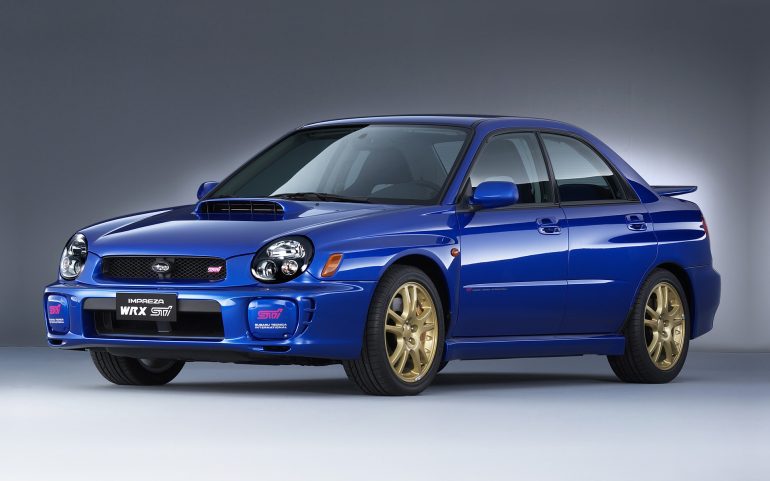
2nd Generation WRX Basics
Code: (GDB-F) Production: 2001-2007
Body style: 4-door sedan 4-door station wagon
Engine: 2.0L H4 2.5L H4
Trans: 6-speed manual, 5-speed semi-auto
Wheelbase: 2004-05: 100.0 in (2540 mm) 2006-08: 99.4 in (2525 mm)
Length: 2004-05: 173.8 in (4415 mm) 2006-08: 175.8 in (4465 mm)
Width: 68.5 in (1740 mm)
Height: 56.3 in (1430 mm)
Curb weight: 3,296 lb
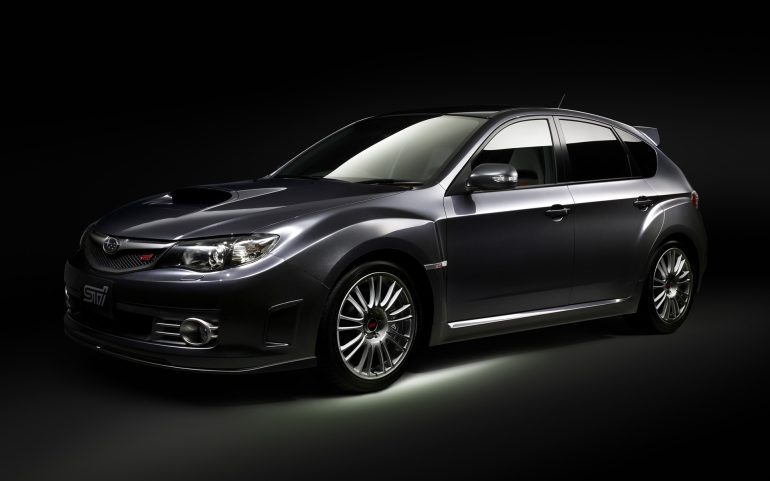
3rd Generation WRX Basics
Production: 2008-2014
Body style: 5-door hatchback, 4-door sedan
Engine: 2.0L Turbo H4, 2.5L Turbo H4
Trans: 6-speed manual, 5-speed auto
Wheelbase: 103.3 in (2,624 mm)
Length: 173.8 in (4,415 mm)
Width: 70.7 in (1,796 mm)
Height: 58.1 in (1,476 mm)
Curb weight: 3,373 lb (1,530 kg)
Subaru Impreza WRX & STi (2008 - 2014)
The Hawkeye was short-lived, as in 2007 Subaru launched its third generation Impreza, with a full redesign both inside and out. This new model has a considerably more modern appearance, and for the first time ever was also offered as a hatchback.
Performance once more peaked, with over 300 horsepower and 300 lb-ft of torque available from the iconic Japanese performance car now. This was a necessary step, as other cars sharing the market sector were also breaching these boundaries, such as the Focus RS and Golf R.
Once more, the weight crept up, and by this point was nearing 3,500 lbs. Due to the power increases though, acceleration and top speed figures remained constant with the previous model.
Subaru Impreza WRX STI 2008
The 2008 STI has received a higher degree of parts to differentiate it from its Impreza WRX brethren. Unlike the Impreza WRX, the STI uses aluminum suspension components, is only available as a 5-door hatchback, and has different fenders that are 2.2 in (56 mm) wider. It adopted "Subaru Intelligent Chassis Design" and "Dynamic Chassis Control Concept". The turbo forces air through a larger top-mountintercooler which has lost the red "STI" that was on previous generations. It is the first generation of this model with an automatic transmission which is able to import to outside Japan.
Like other 2008 Impreza models, the 2008 STI benefits from a lower polar moment of inertia due to smaller overhangs, and also features a double wishbone rear suspension. The car also borrows new intake and exhaust components from the Legacy GT platform. The latest Impreza WRX STI features Multi-mode Vehicle Dynamics Control (VDC) with "Normal", "Traction", and "Off" modes, Subaru Intelligent-Drive (SI-Drive) with 3 modes: Intelligent, Sport, and Sport Sharp (S#), and Multi-mode Driver's Controlled Centre Differential (DCCD). The DCCD enables driver to select the manual or auto: "auto", "auto+", and "auto-" mode in order to distribute the torque based on driving preference or conditions. Subaru Impreza WRX STI (Japan)
The JDM version has a 2.0L 308 PS (227 kW; 304 bhp) EJ207 engine with a Twin scroll turbocharger, while other versions of the car have a 2.5L 300 PS (221 kW; 296 bhp) EJ257 engine with a single-scroll VF48 turbocharger. At the New York Auto Show, a Subaru spokesman confirmed that the Impreza WRC will be based on the hatch platform, due to its lower polar moment of inertia. The latest US model of the STI has 305 bhp (227 kW; 309 PS) and 290 ft-lb (390 N·m). of torque and range in price from $35,640 to $39,440, depending on the options included.
The 2008 Impreza STI has the model code GR, reflecting the different "wide body" 5-door Hatchback compared to the GH standard body 5-door Hatchback used for the 2008 Impreza WRX and non-turbo models. The new "wide body 5-door" chassis is 70.7 in (1796 mm) wide compared to 68.5 in (1740 mm) for the regular WRX 5-door chassis. Curb weight varies from 1,505 kg (3,318 lb) to 1,540 kg (3,395 lb) depending on the options. In 2008, a Subaru WRX STI spec C was in the works for production. It had been spotted lapping the Nurburgring. It is expected to shed 70 kg (154 lb) in weight, have minor engine tweaks, have an updated aero kit, and bigger brakes.
A possible precursor to the WRX STI spec C had surfaced at the MotorSport Japan 2008 auto show, named the Subaru Takumi concept. The only visual cues to differentiate this car from the regular STI are a blacked-out rear spoiler, front lip spoiler, and 12-spoke wheels that are strikingly similar to the ones featured on the spec C test mule spotted around the Nurburgring. The upgraded parts included on the car are drivetrain and suspension modifications. There is no word on performance figures or power output. It was later confirmed by Autoblog that the Takumi concept was in fact just an unveiling of the 20th Anniversary Edition WRX STI and not the spec C. All 300 examples will be exclusive to the Japanese market. Subaru launched the Impreza WRX STI A-Line with a five speed semi-automatic gearbox on February 24, 2009.
Available initially only in Japan and Singapore, the A-Line features include “Downshifting Blipping Control” and steering wheel-mounted paddles. The engine and transmission in the A-Line are very similar to 2007-2009 Legacy 2.5 GT models. However, the A-line has less torque (35.7kgfm) and slower acceleration (0 to 100 km/h takes 6.1 seconds) compared to the manual STI version. The A-Line is also offered in Hong Kong, and later in Indonesia with debut at the 2010 Indonesia International Motor Show in July 2010, and will be exported to Australia in 2011. Finally, on July 23, 2009, the Subaru Impreza WRX STI spec C was released in Japan. The 900 units limited edition WRX STI spec C has engine, suspension, and body parts improvement over the regular model.
The ball bearing on the turbine axle had been modified to reduce friction, the ECU had been retuned for better response, and an intercooler water spray was fitted to prevent rise in the air temperature. The cross member, suspension and power steering were also improved for better handling and body rigidity. Aluminum hood, laminar window glasses, and lighter battery helped to reduce weight. Subaru (UK) Limited introduced two new WRX STI models at the British Auto Show that have specific tuning by Prodrive.
The first is WRX STI 330S, intended to compete with the UK-spec Lancer Evolution X FQ-330. It produces 330 PS (243 kW; 325 bhp) and has a 0-60 mph time of 4.4 seconds. The last of the two would be the WRX STI 380S. It could make it into production within 6 months, pending positive consumer reception. It sports new wheels and an upgraded body kit. It is expected to produce 380 PS (279 kW; 375 bhp).
Subaru WRX & STi (2015 - 2021)
The fourth generation proved a major success, judging by the length it stayed in production, matching the 8 years achieved by the original model. By the end of the production run from this model, the mighty Impreza had begun celebrating its 30th anniversary. Fans of the brand will have been pleased to see the same principles remain constant over the years, with little changing in the Impreza WRX recipe.
This WRX generation was known as the last to be built upon its own chassis. That’s one way of saying that this generation was your last chance to have a pure “WRX” experience. Like the previous generation, the third-gen was larger and heavier than its predecessors. This new generation said goodbye to the EJ255 engine and was replaced by the FA20F motor, which offers more torque.
This setup translated to 238 hp and 258 lb-ft of torque and an acceleration range of 0-60 mph in 4.8 to 5.5 seconds – depending on the transmission system: manual, automatic, or CVT transmission. On a side note, the third-gen WRX with a six-speed manual transmission was considered the fastest-ever WRX in a straight line.
Moreover, Subaru also upgraded the WRX’s suspension and chassis, so you’re only a few tune-ups away from reaching 300 hp. In fact, you’ll probably have a hard time finding a third-gen WRX or STI without modifications. The Limited editions RA and S209 both fetch a premium price on the market these days.
The new model grew slightly over its predecessor and, again, more refined. Features such as leather upholstery and navigation were available on higher-end versions, as were appearance packages. A new option on automatic-equipped vehicles was the Subaru EyeSight group of driver-assistance technologies that included automatic emergency braking, lane-keep assist, and adaptive cruise control.
The WRX STI continued with its six-speed manual as the only transmission and a revised 2.5-liter turbocharged four, first with 305 horsepower and, later, 310. Special design details, including a larger wing on the trunk lid, completed the package. For 2019, a special-edition STI S209 limited edition was released with 341 horsepower.
But apart from modest changes, the third-generation WRX was mostly unchanged for seven years as Subaru focused on its popular SUVs like the Outback, Forester, and Ascent. Finally, after seven years, a new WRX was ready.
In 2016, Mark Higgins pilots a specially modified 600 hp STI race car around the Isle of Man TT course, coming within a half-minute of the records set by the motorcycles. The record is not terribly important, as Subaru is the only car manufacturer to run the course, but the lap is thrilling to watch.
In 2017, the Subaru STI Type-RA NBR clocks a 6 minute 57.5-second lap around the Nürburgring. The RA road car that follows can't come close to matching that performance, but rather pays homage to it.
The S209 emerges as the most hardcore STI to ever officially reach US soil. It's not just a power upgrade: the steering, suspension, brakes, cooling, gearing, and aerodynamics are all reworked by STI's specialists. The latter was built specially by STI, at a tiny factory that only produces two cars per day.
In 2021, Travis Pastrana breaks his own record at the Mount Washington hillclimb with a breathtaking 5:28.67 run up the mountain. His 862 hp “Airslayer” STI was some 45 seconds quicker than the next competitor.
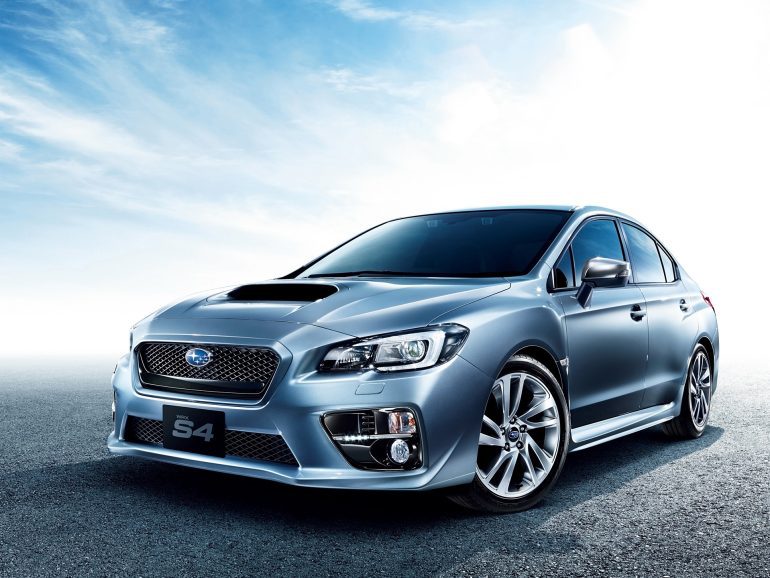
4th Generation WRX Basics
Production: 2015–2021
Model years: 2015–2021
Engine: 2.0 L EJ207 H4-T (STI, Japan only)
Engine: 2.0 L FA20F H4-T (WRX)
Engine: 2.5 L EJ257 H4-T (STI, export)
Trans: 6-speed TY75 manual (WRX, export only)
Trans: 6-speed TY85 manual (STI)
Trans: Lineartronic TR690 CVT (WRX)
Wheelbase: 2,650 mm (104.3 in)
Length: 4,595–4,635 mm (180.9–182.5 in)
Width: 1,795 mm (70.7 in)
Height: 1,475 mm (58.1 in)
Curb weight: 1,480–1,595 kg
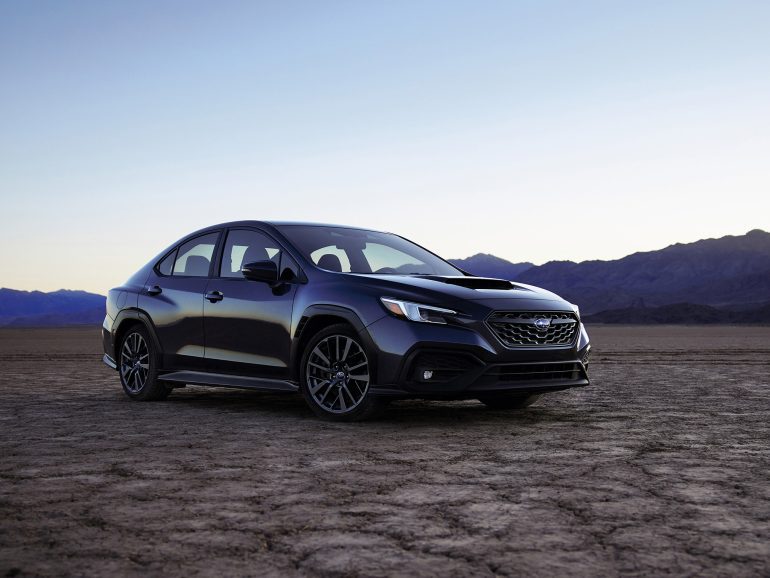
5th Generation WRX Basics
Production: 2021–present
Model years: 2022–present
Platform: Subaru Global Platform
Engine: 2.4 L FA24F turbo H4
Transmission: 6-speed manual, Subaru Performance CVT
Wheelbase: 2,670 mm (105.1 in)
Length: 4,669 mm (183.8 in)
Width: 1,826 mm (71.9 in)
Height: 1,468 mm (57.8 in)
Curb weight: 1,590–1,600 kg
Subaru WRX (2021 - Present)
The Subaru WRX, a name synonymous with rally-inspired performance and all-wheel-drive capabilities, entered a new era with its 2021 model. This generation builds on its rich heritage with significant updates over its predecessors, incorporating more advanced technology, refined designs, and enhanced driving dynamics. Here’s an in-depth look at the latest Subaru WRX, covering everything from its evolutionary changes and specifications to critical reviews and special editions.
The 2021 Subaru WRX marks a departure from the previous generation in several key areas:
Platform: The latest WRX is built on Subaru’s Global Platform, which is sturdier and offers improved crash energy absorption by up to 40% over the old platform. This change enhances the overall safety, stability, and handling of the car, providing a smoother and more responsive driving experience.
Design: Visually, the WRX has undergone a robust facelift. It features a more aggressive front fascia with a prominent grille and sharper headlights. The body lines are more pronounced, giving the car a more muscular appearance. The interior also sees upgrades with a more driver-focused layout and improved materials for enhanced comfort and aesthetics.
Performance: Under the hood, the 2021 WRX is equipped with a new 2.4-liter turbocharged boxer engine, replacing the previous 2.0-liter engine. This engine boosts the performance to about 271 horsepower and 258 lb-ft of torque, paired with either a six-speed manual transmission or an optional continuously variable transmission (CVT) that has been tuned for a more engaging driving experience.
The 2021 Subaru WRX has generally received positive reviews, with praise focusing on its powerful new engine and improved driving dynamics. Critics appreciate the WRX for maintaining its sporty edge and driver engagement, especially with the manual transmission. However, some reviews have noted that while the interior improvements are welcome, the WRX still lags behind some competitors in terms of luxury and in-cabin technology.
Specifications and Key Features
Engine: 2.4-liter turbocharged boxer engine
Power: 271 hp
Torque: 258 lb-ft
Transmission: 6-speed manual or CVT
Drivetrain: Symmetrical All-Wheel Drive
Safety: Standard EyeSight Driver Assist Technology (on CVT models), including adaptive cruise control, lane-keeping assist, and pre-collision braking
Infotainment: New 11.6-inch Starlink multimedia touchscreen
Performance Features: Track-tuned suspension, Vehicle Dynamics Control with Active Torque Vectoring
The 2021 and beyond Subaru WRX continues to uphold its reputation as a performance-centric, practical sedan that can thrill on the weekends and commute during the week. With substantial updates in performance, safety, and design, the latest WRX is a testament to Subaru's commitment to improving and evolving its vehicles while staying true to its sports sedan roots. Whether it’s navigating winding back roads or enduring daily traffic, the WRX remains a top choice for driving enthusiasts looking for a blend of power, precision, and practicality.
"The WRX is a car that makes you feel alive. It's a car that you can't help but smile when you're behind the wheel."
Motor1


